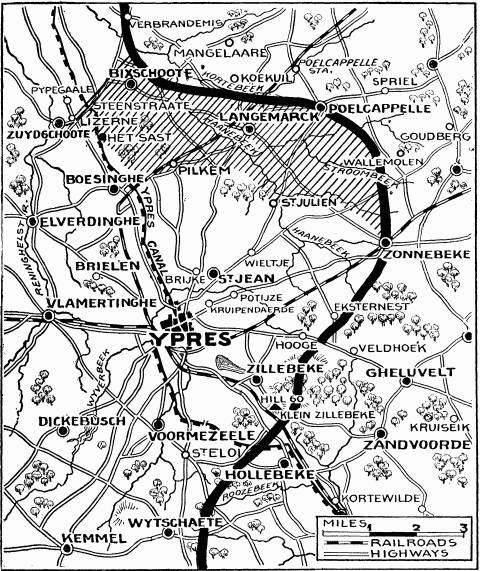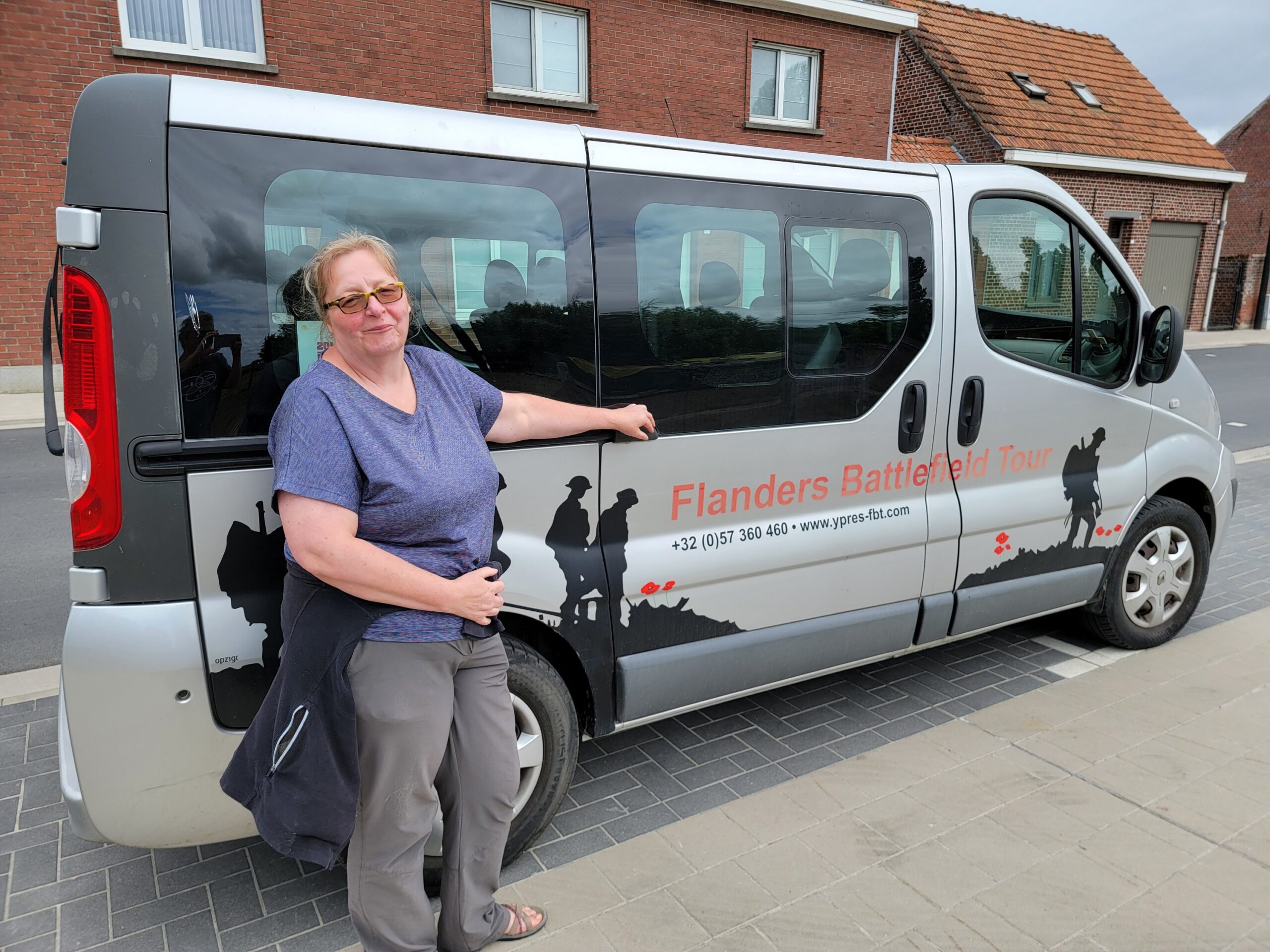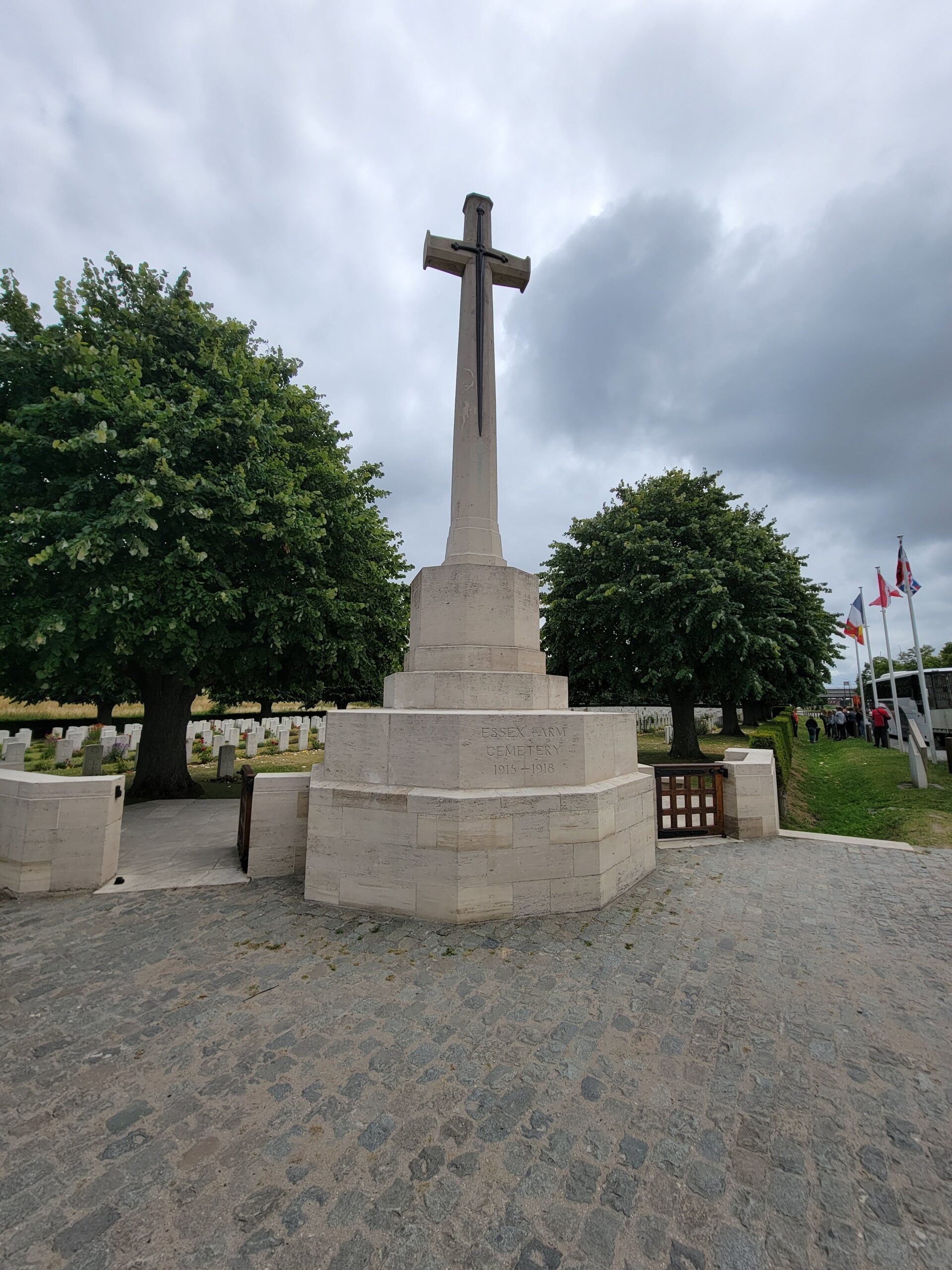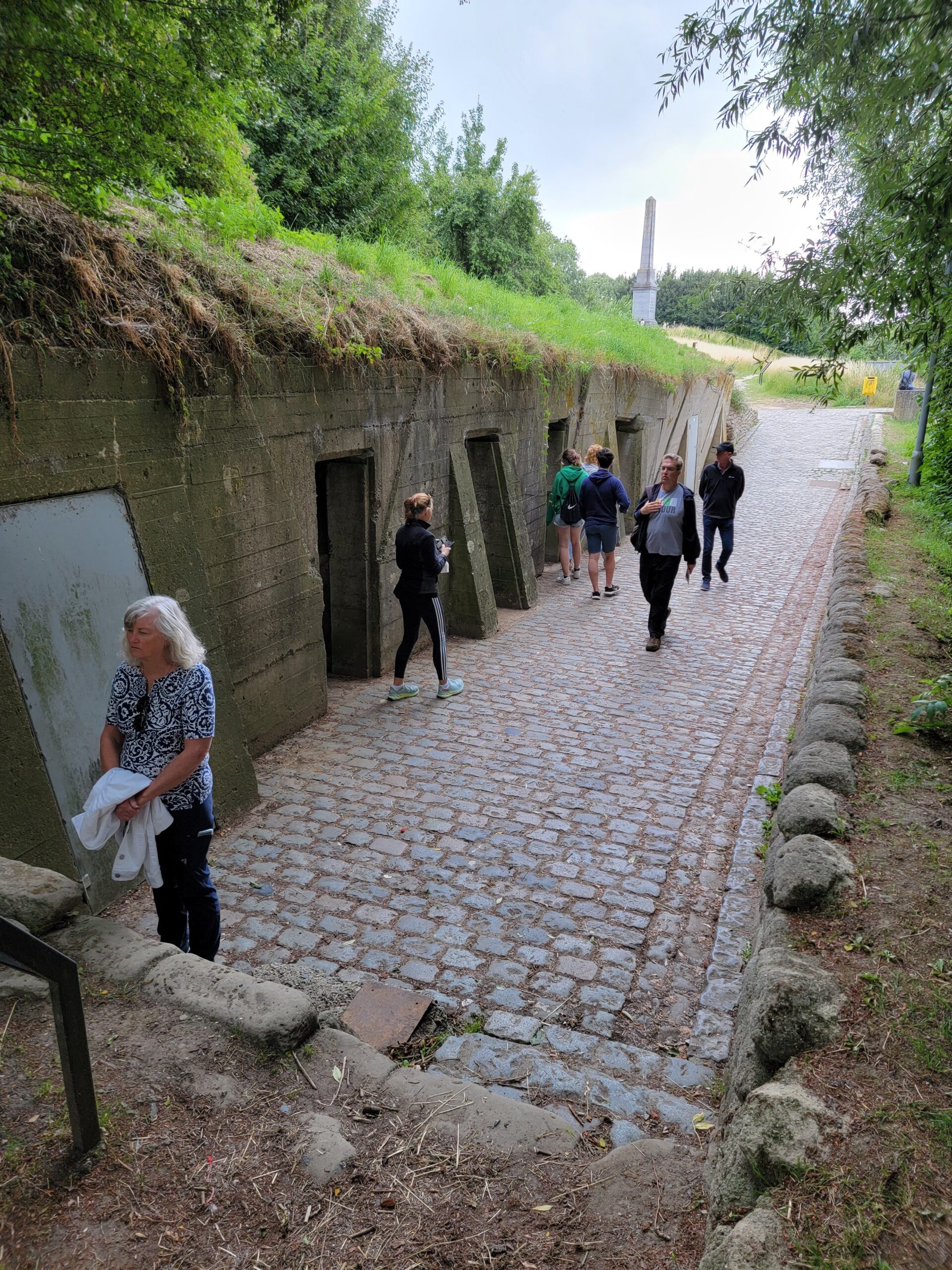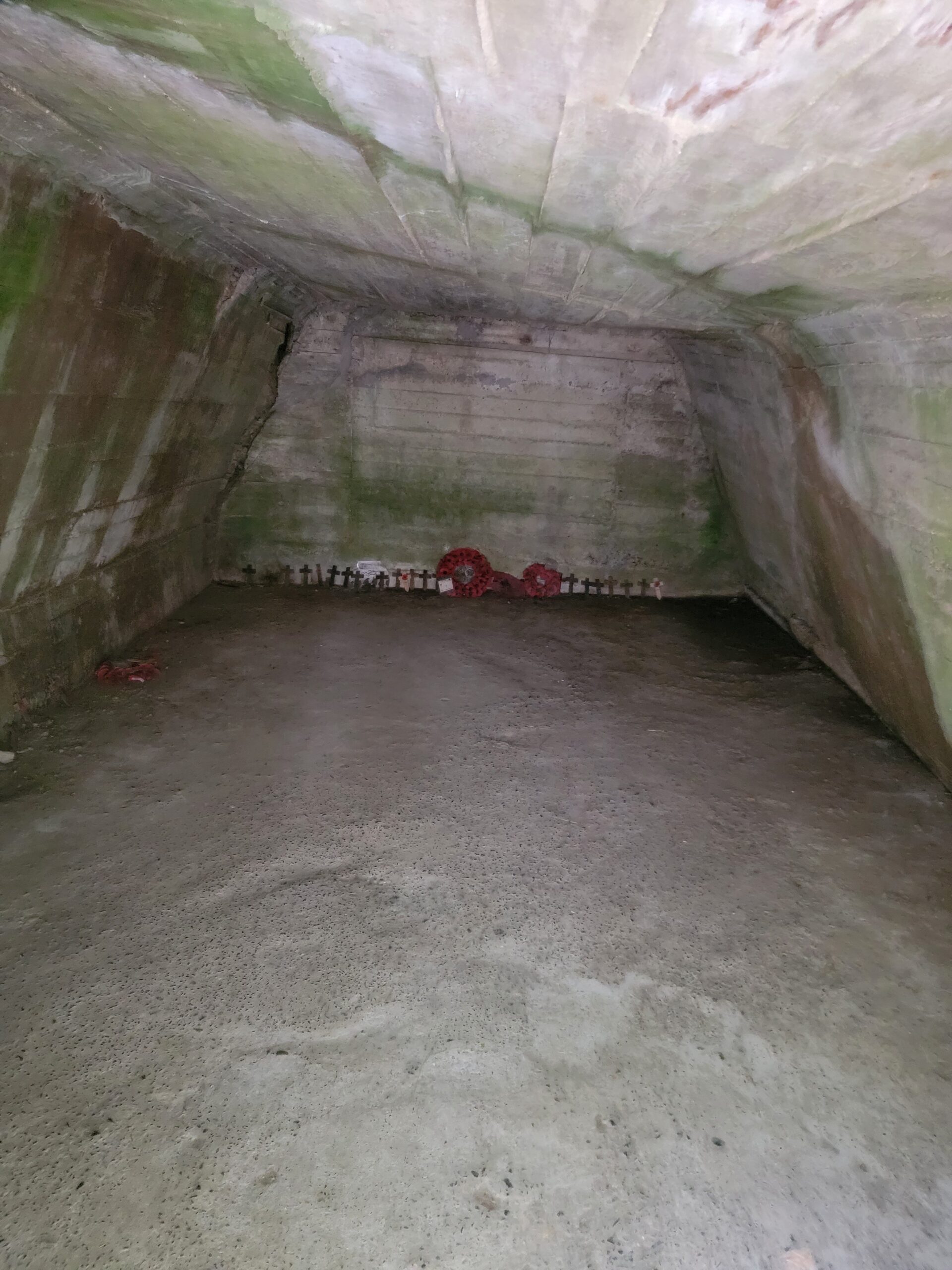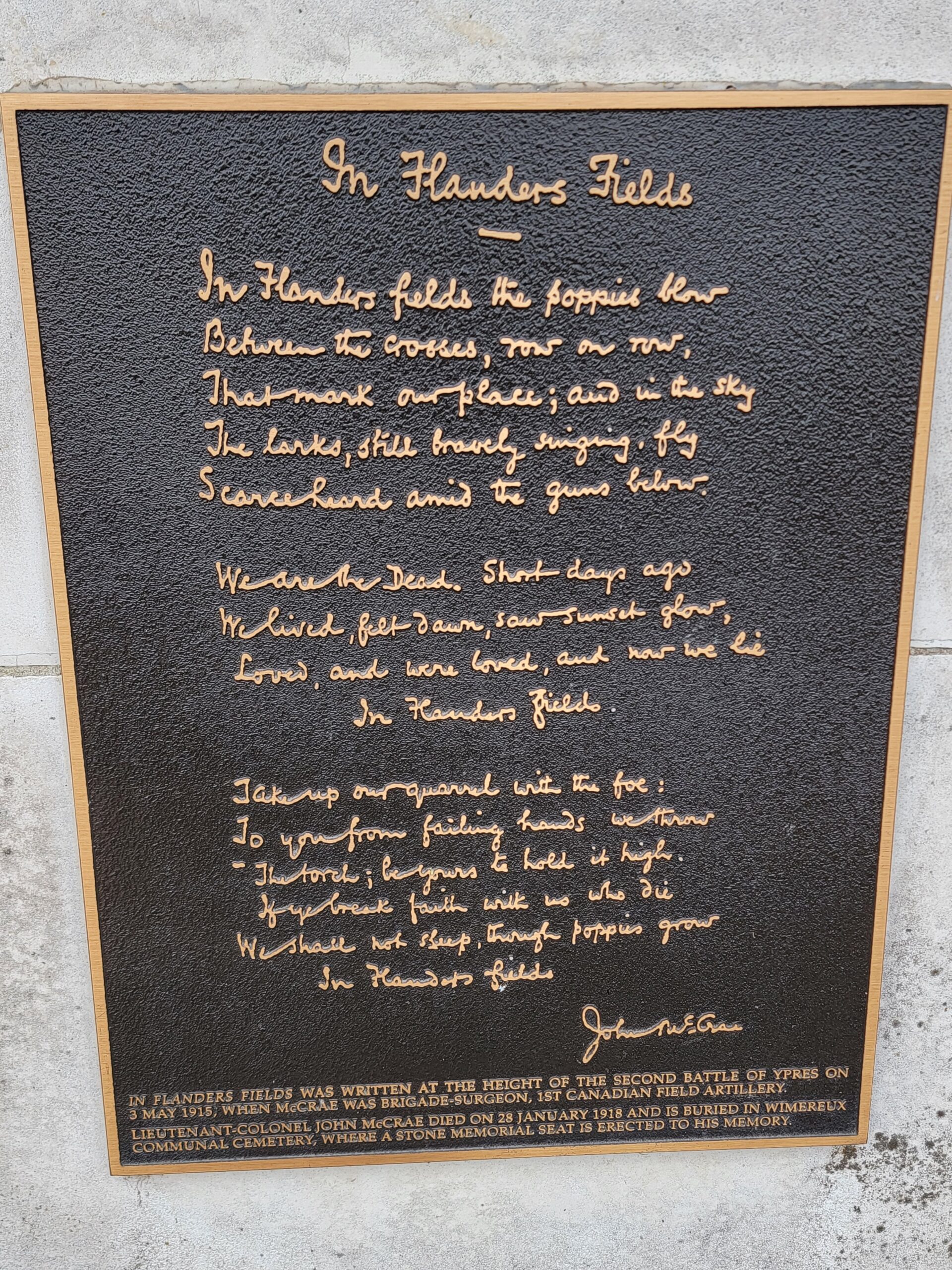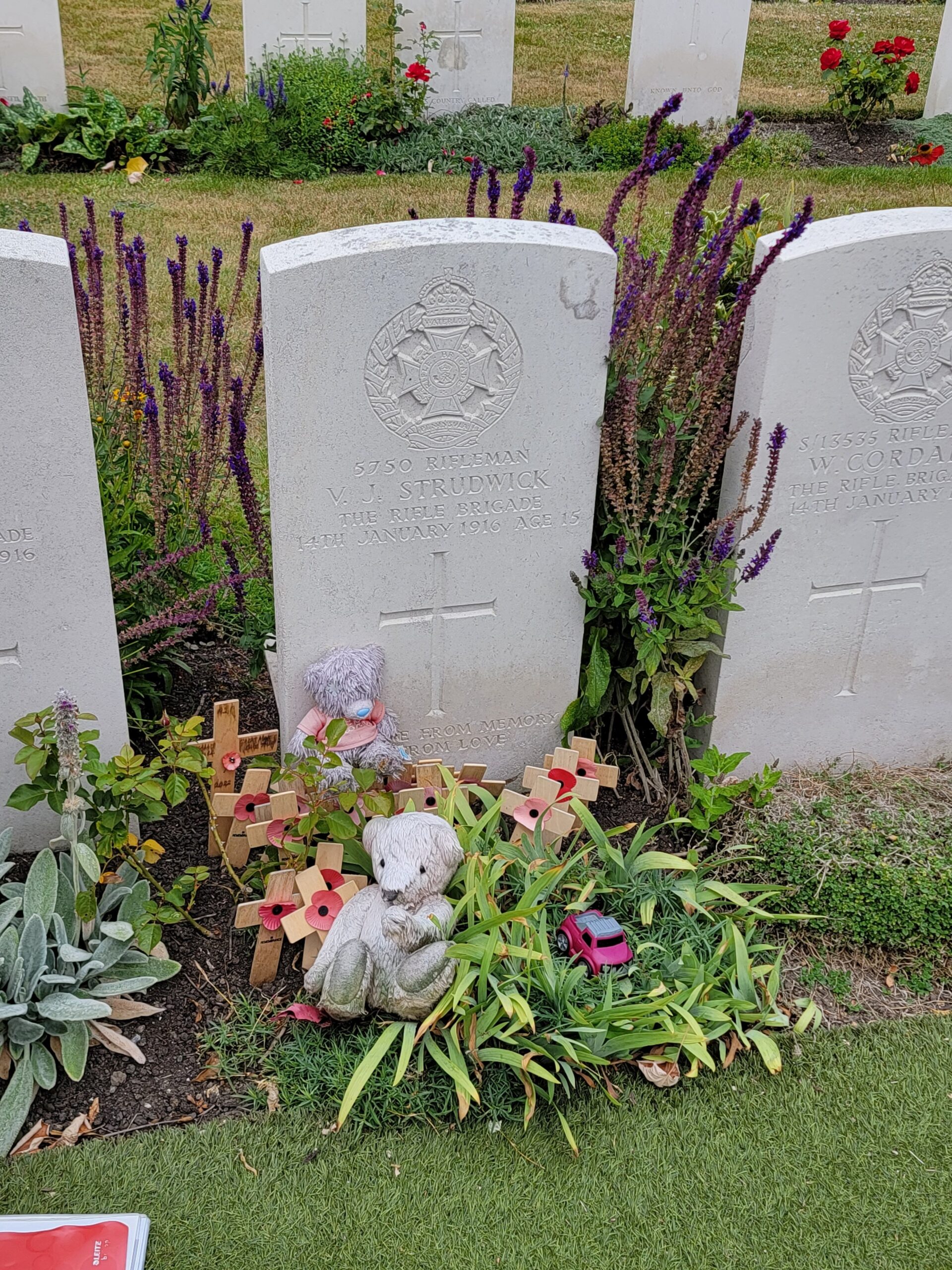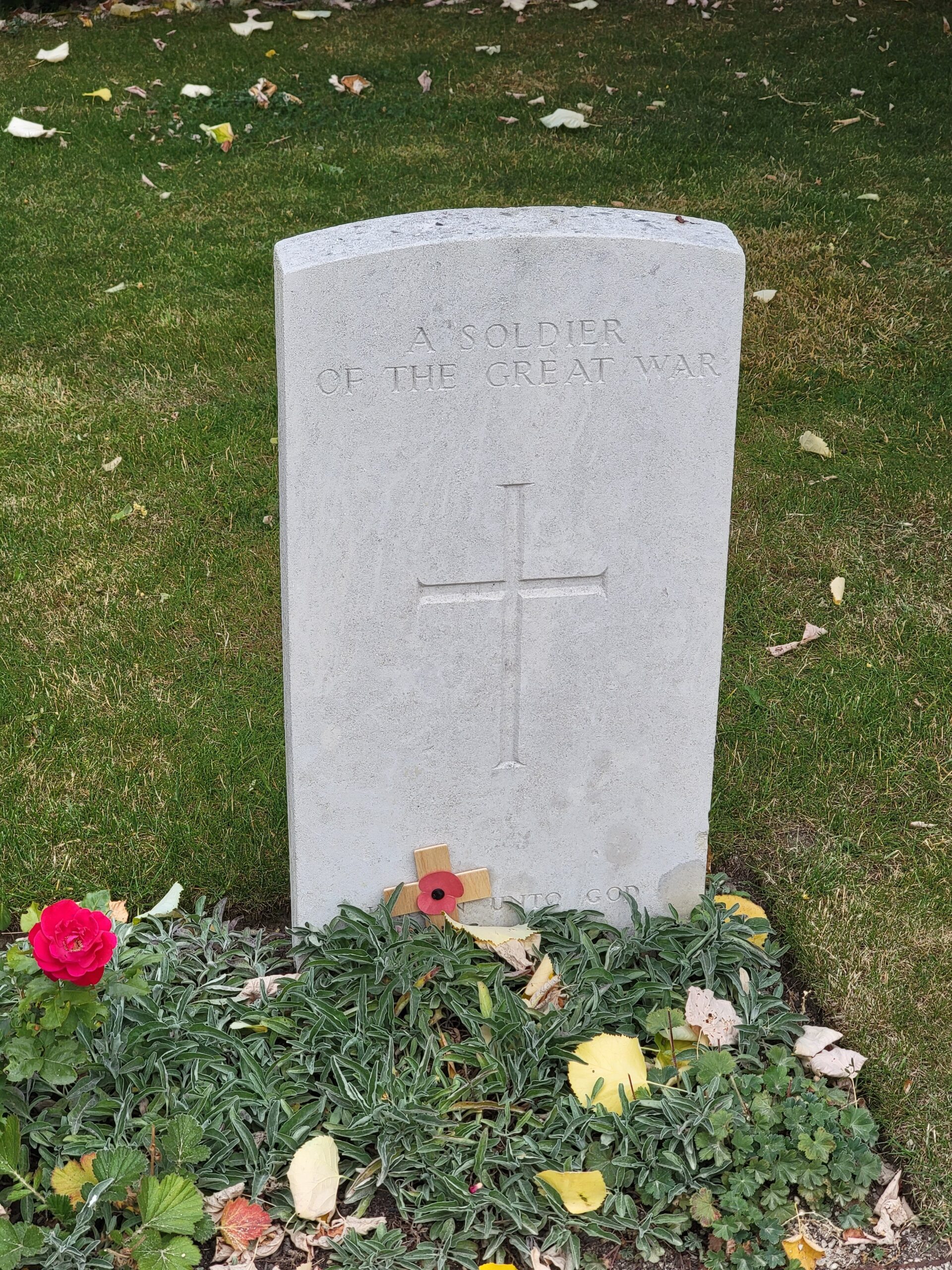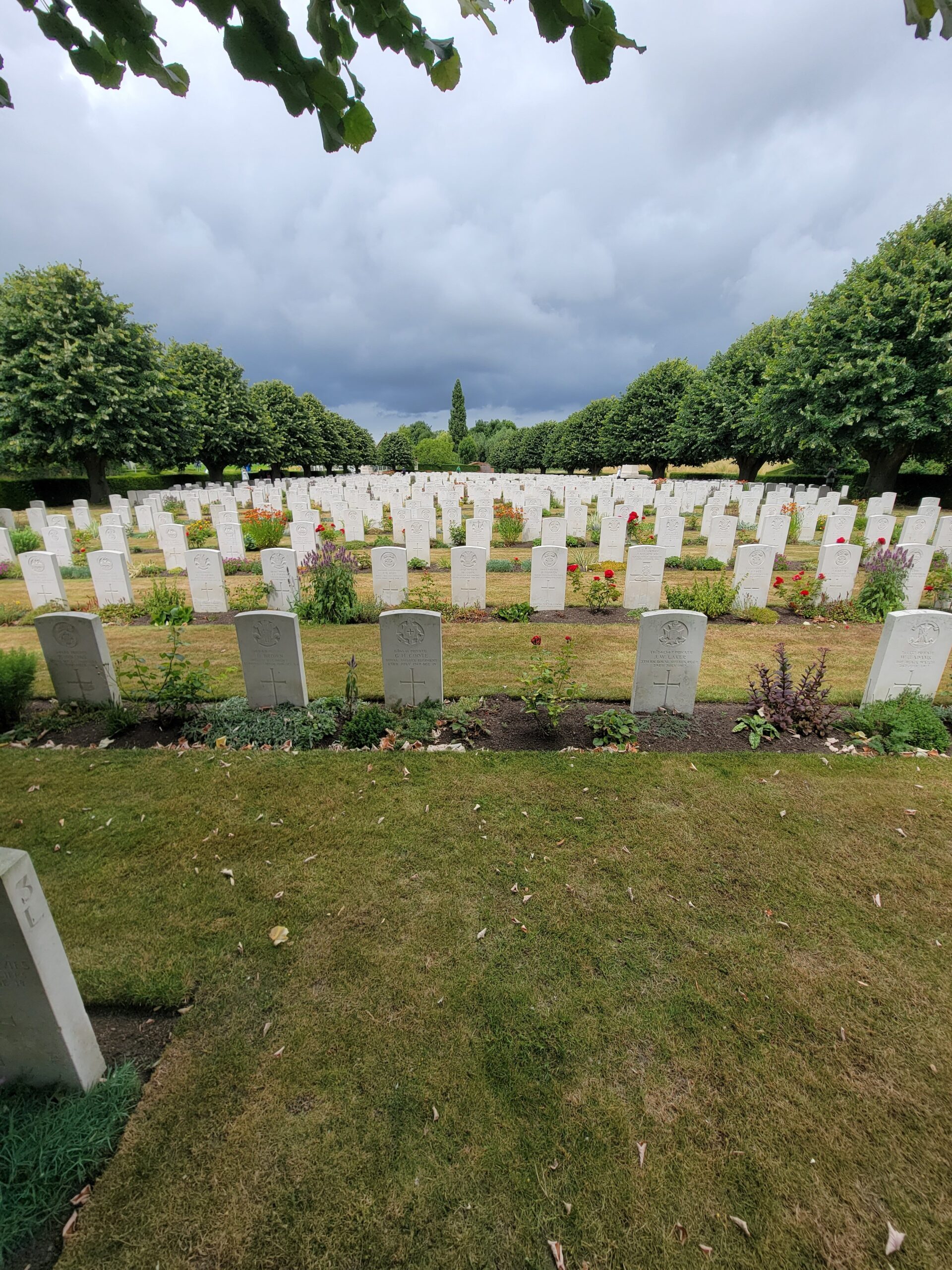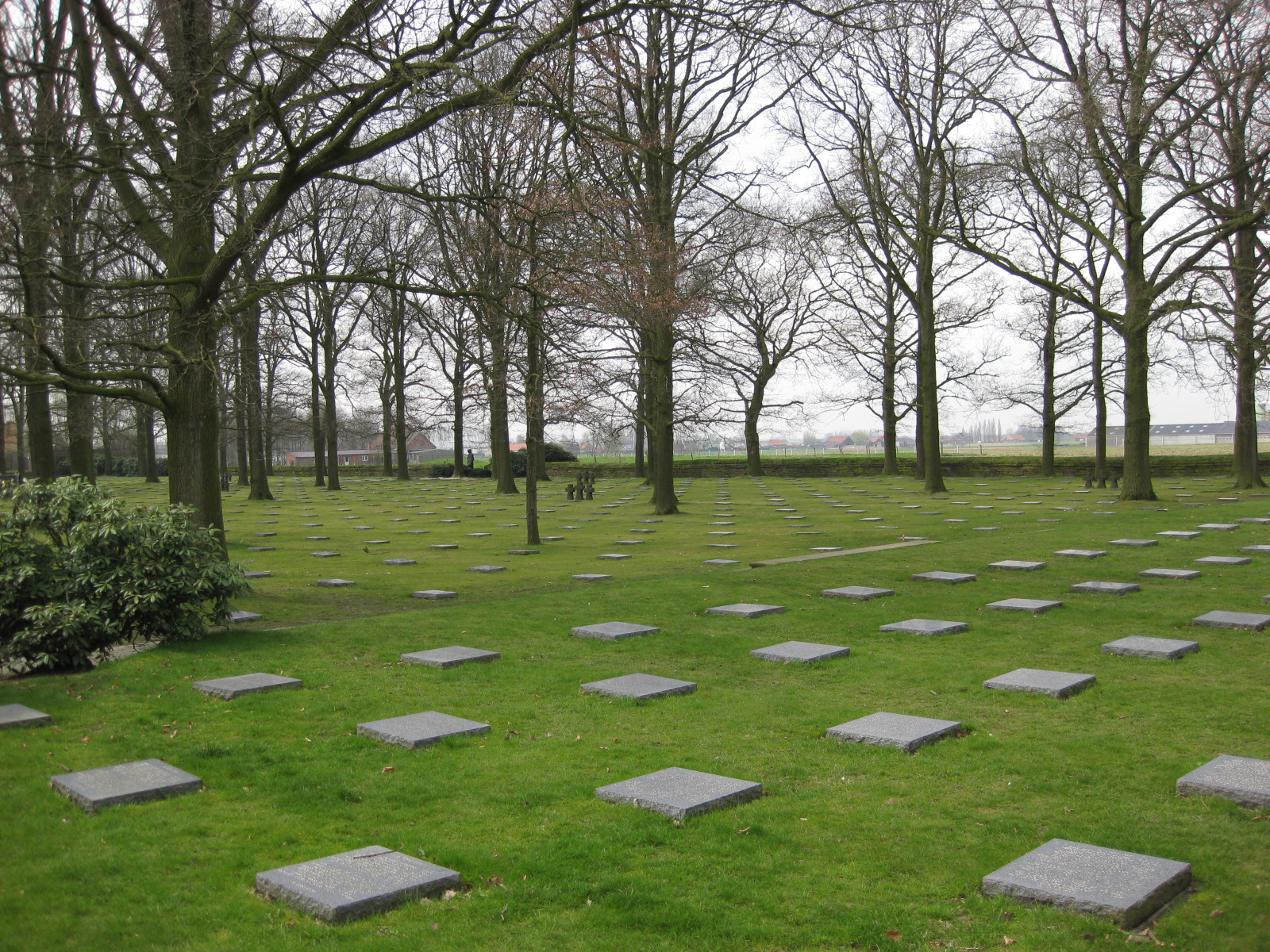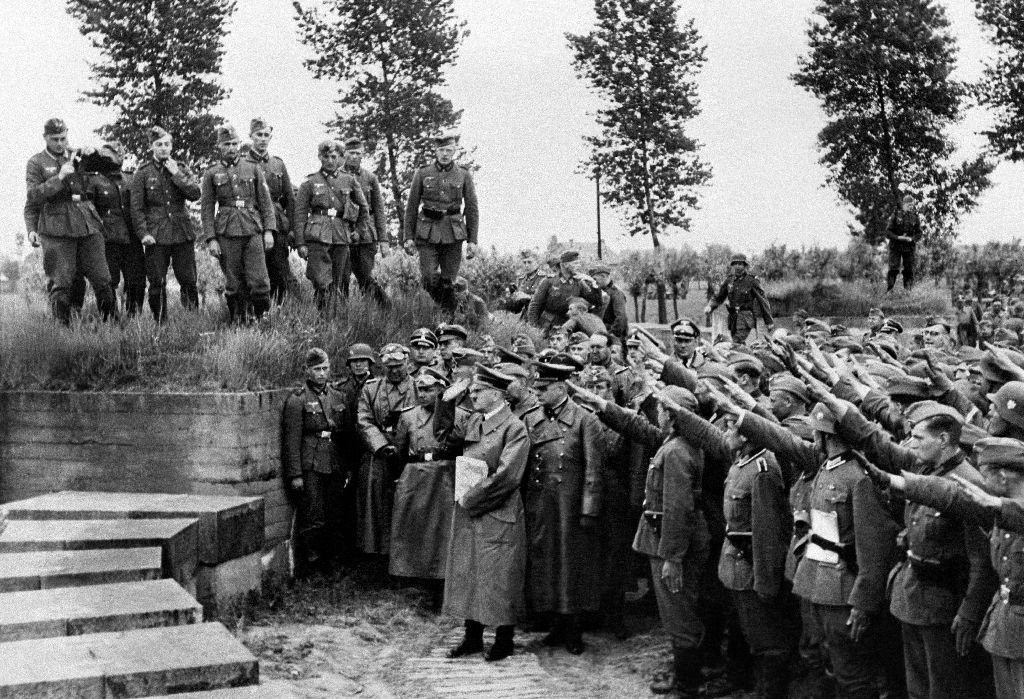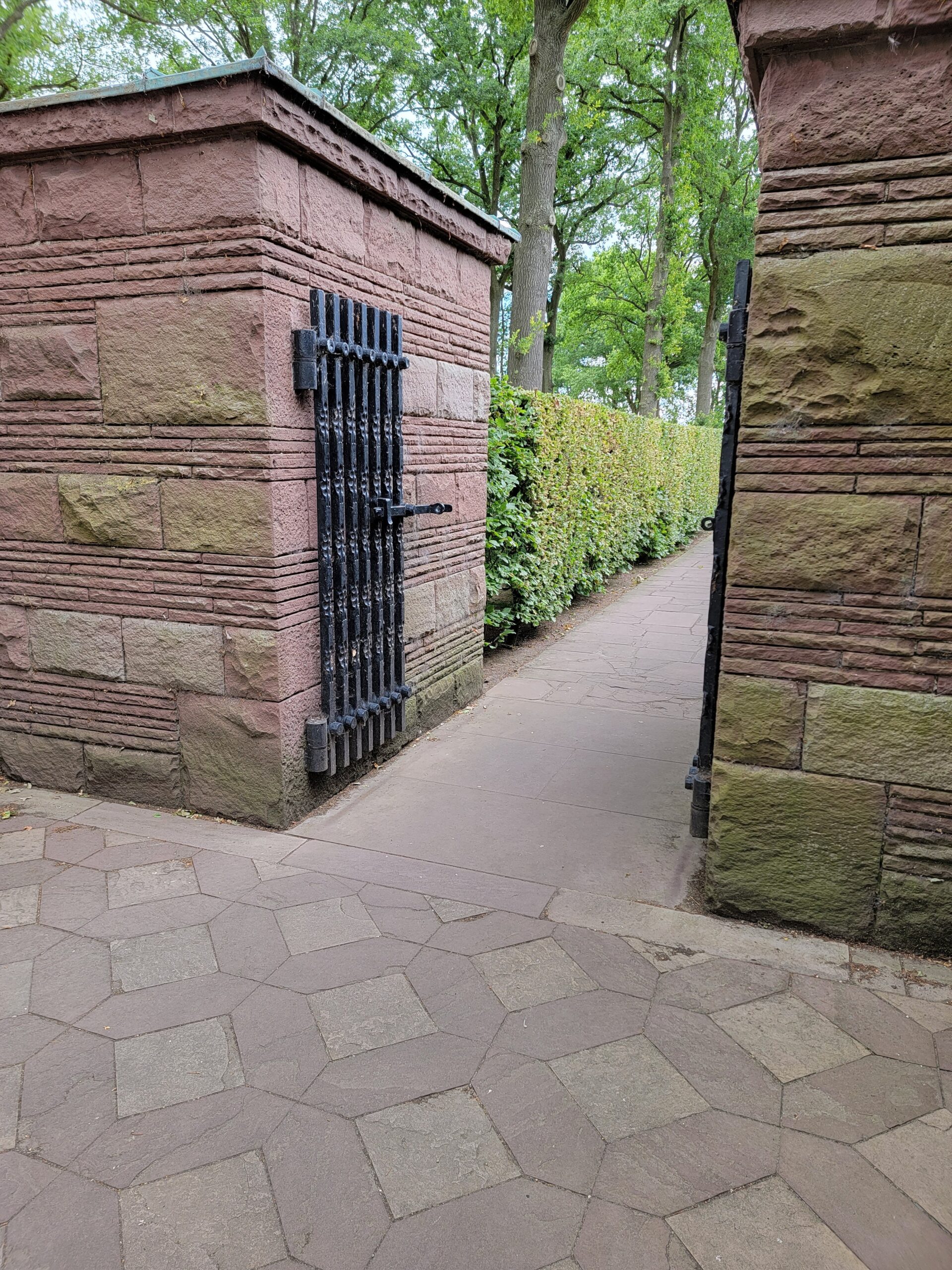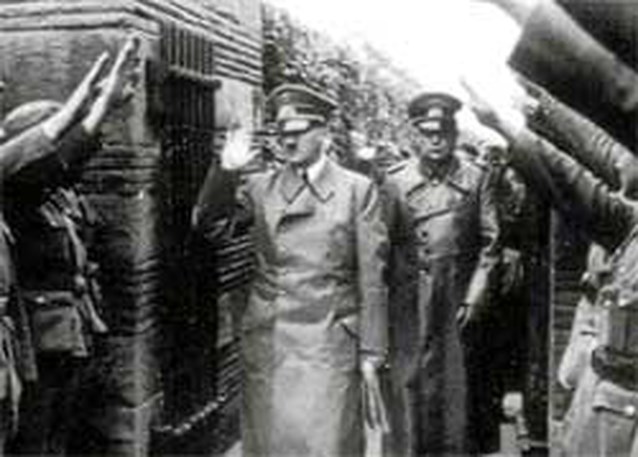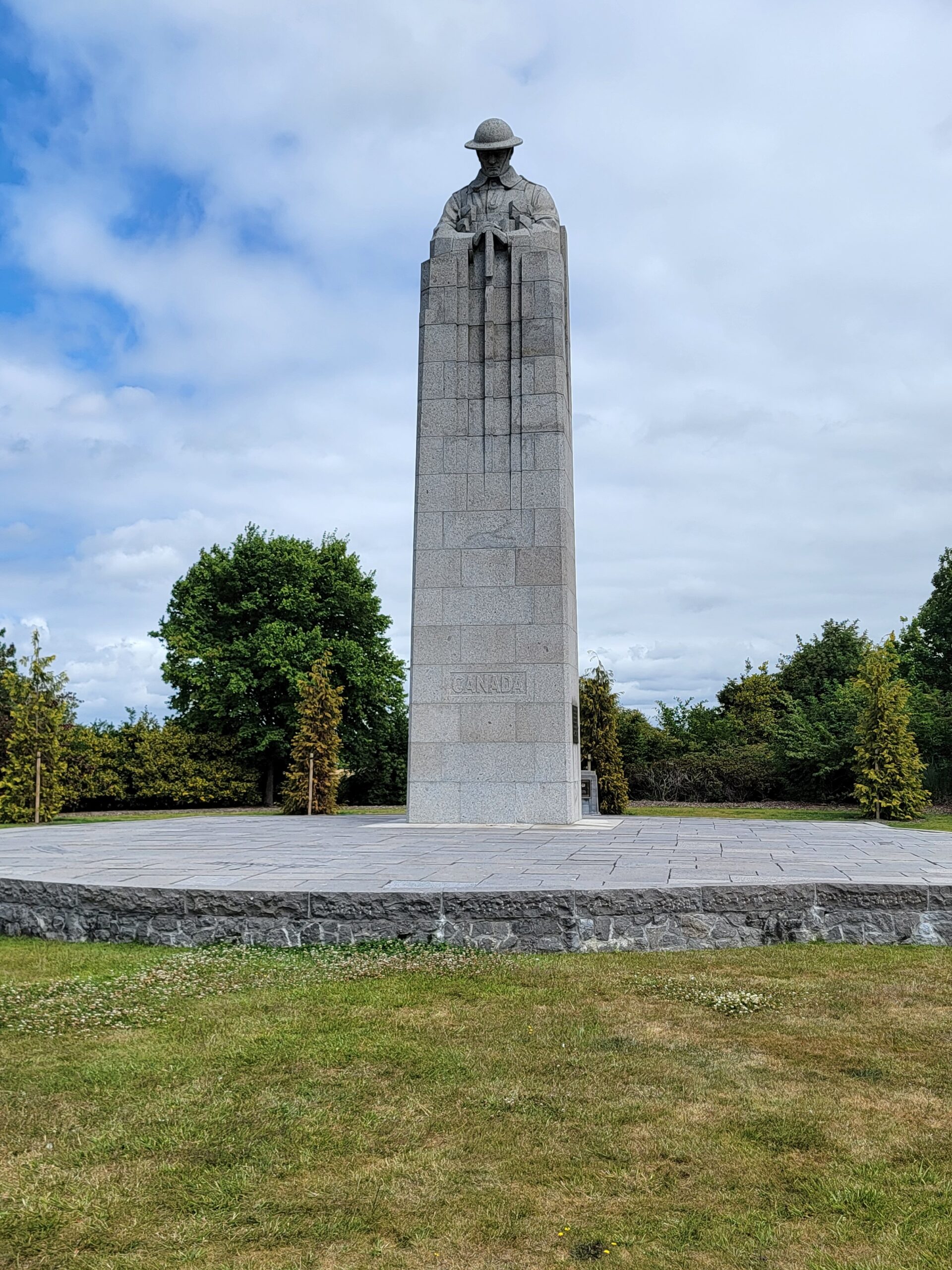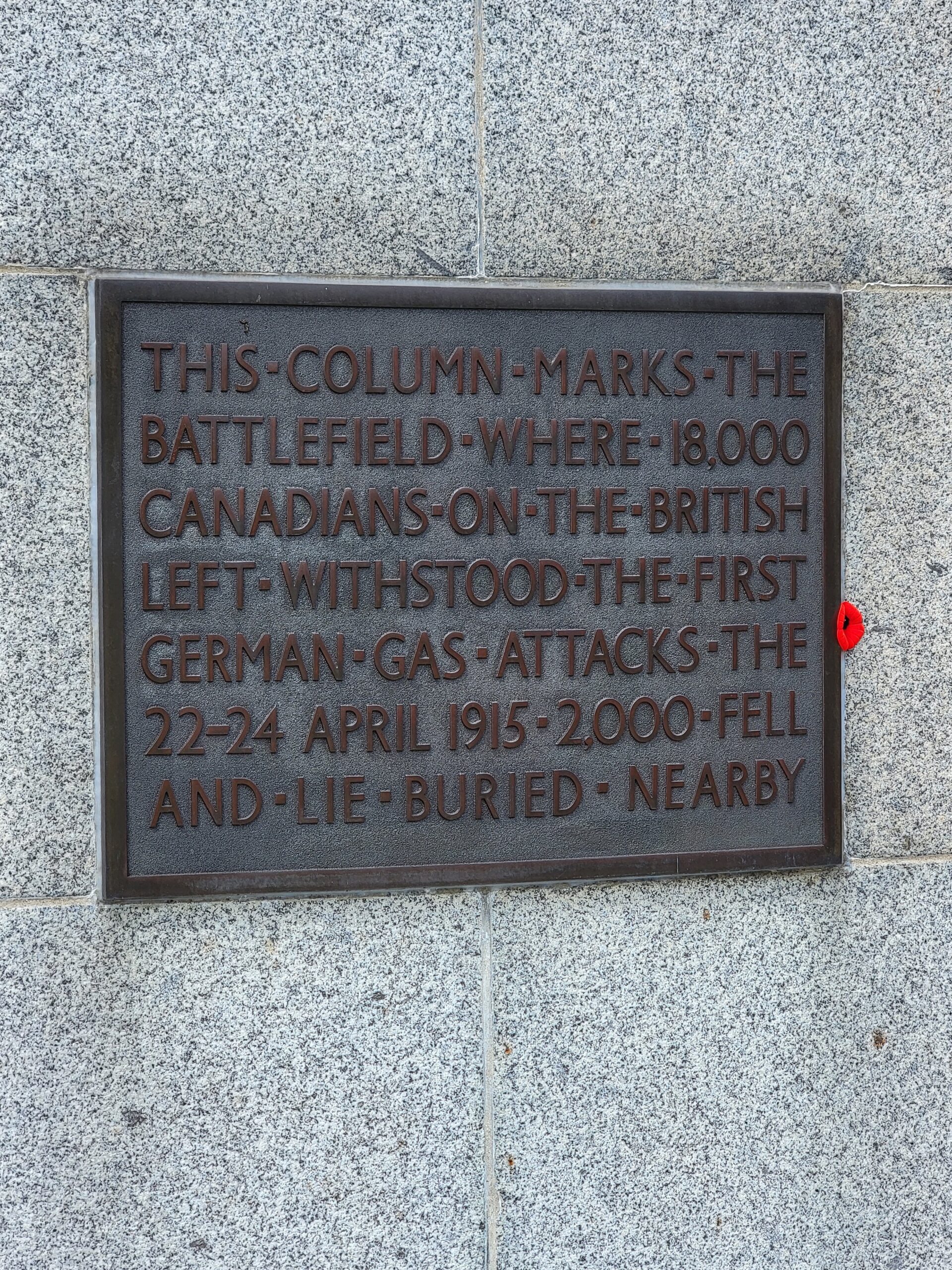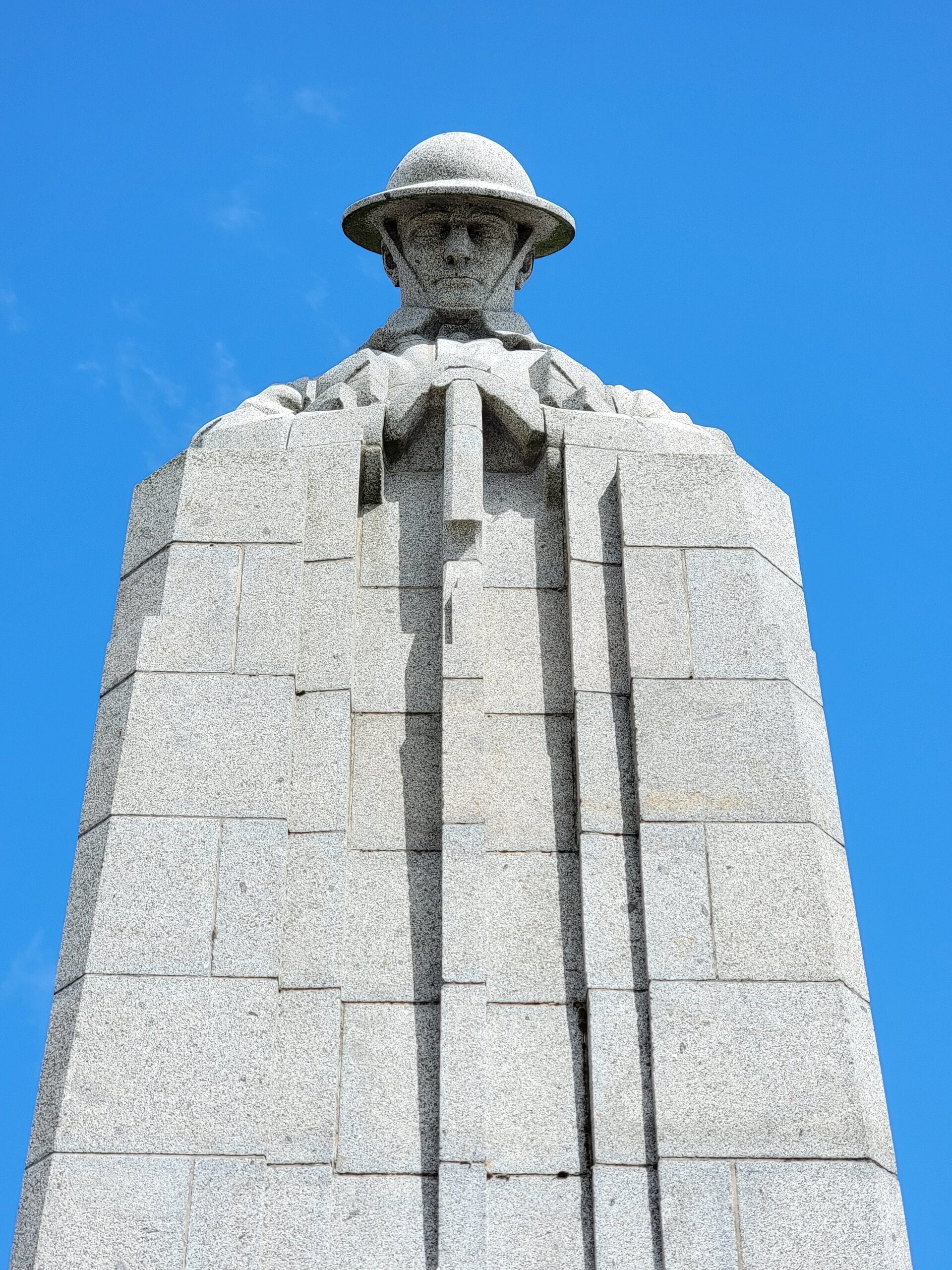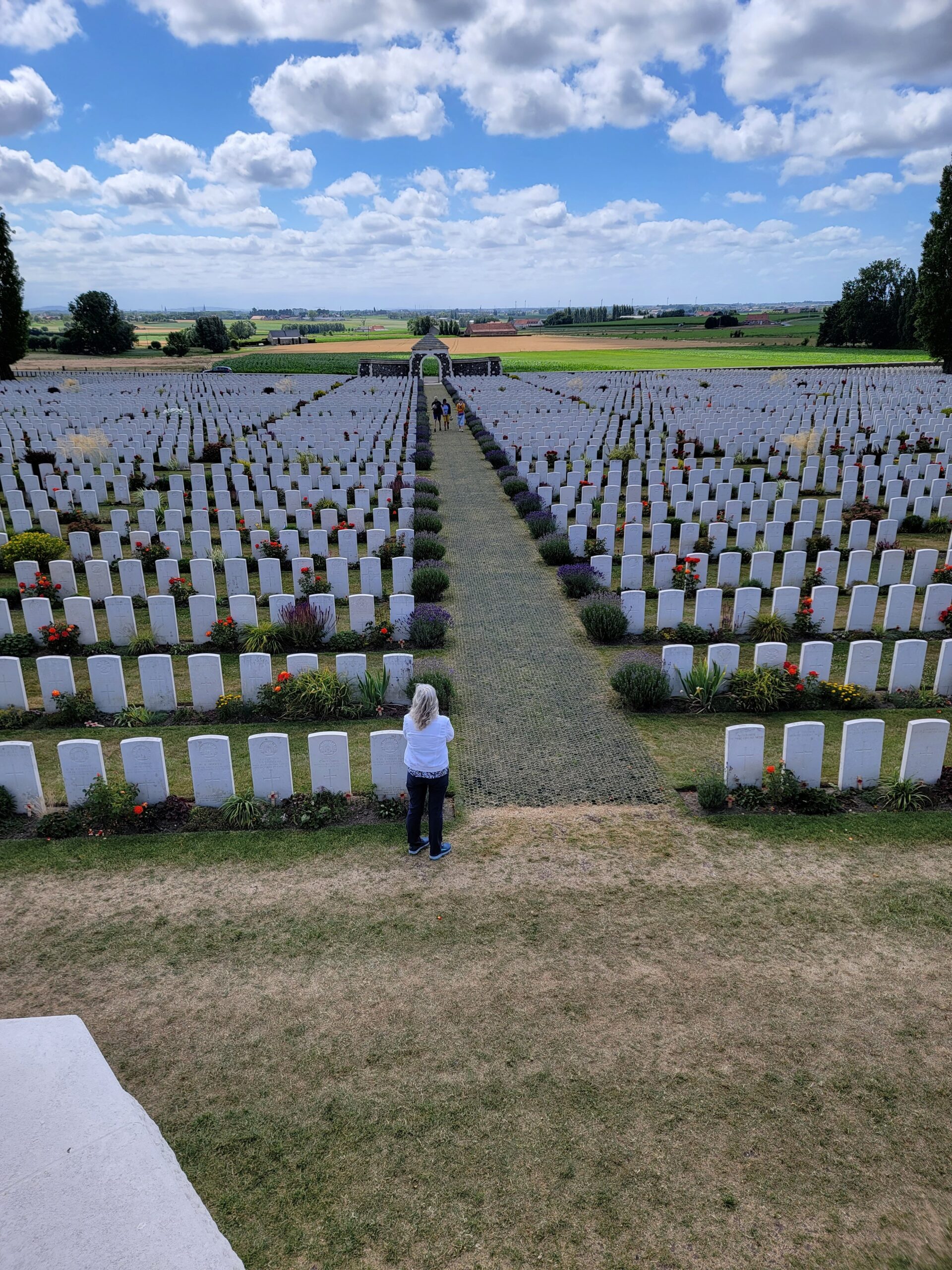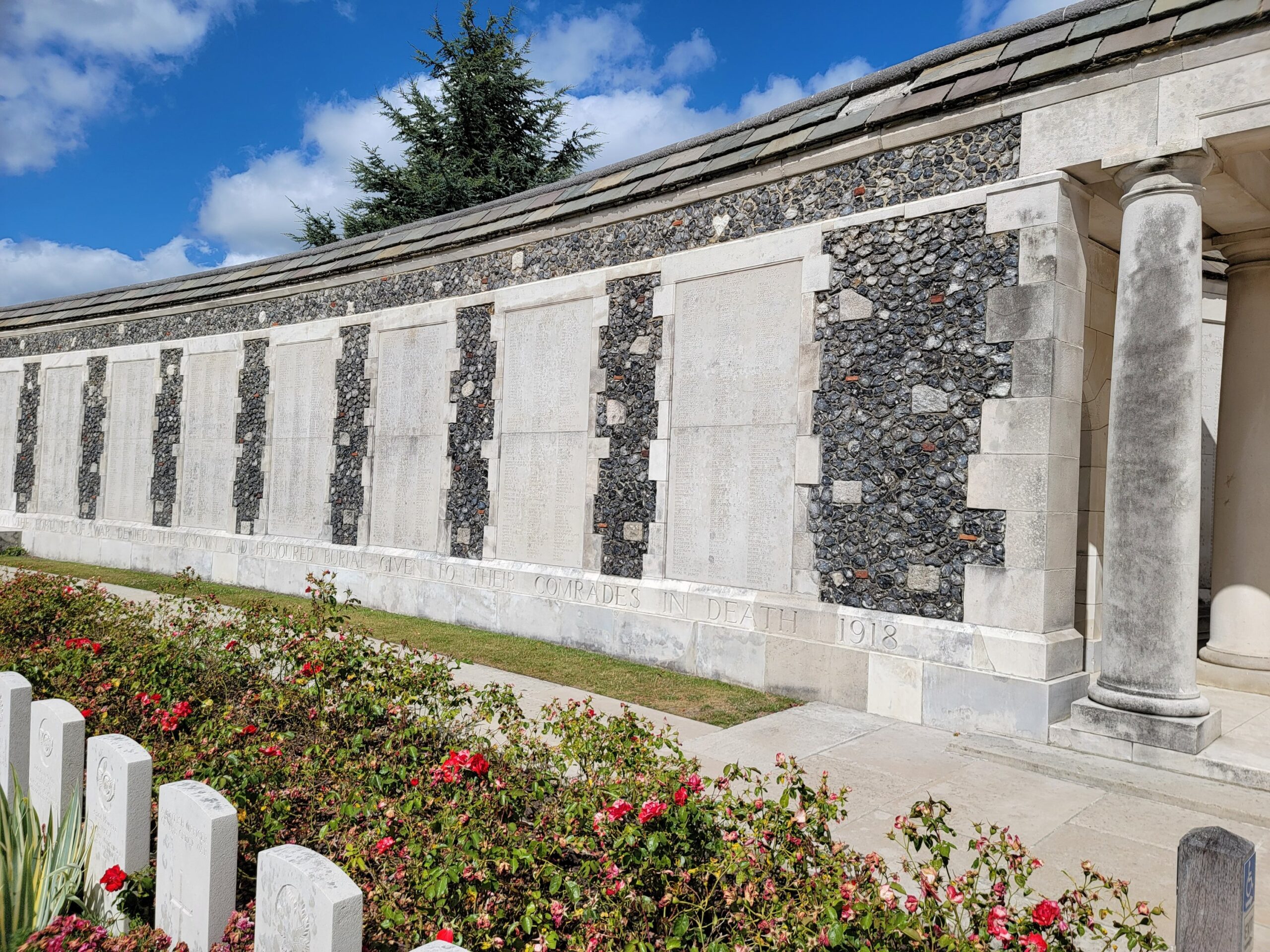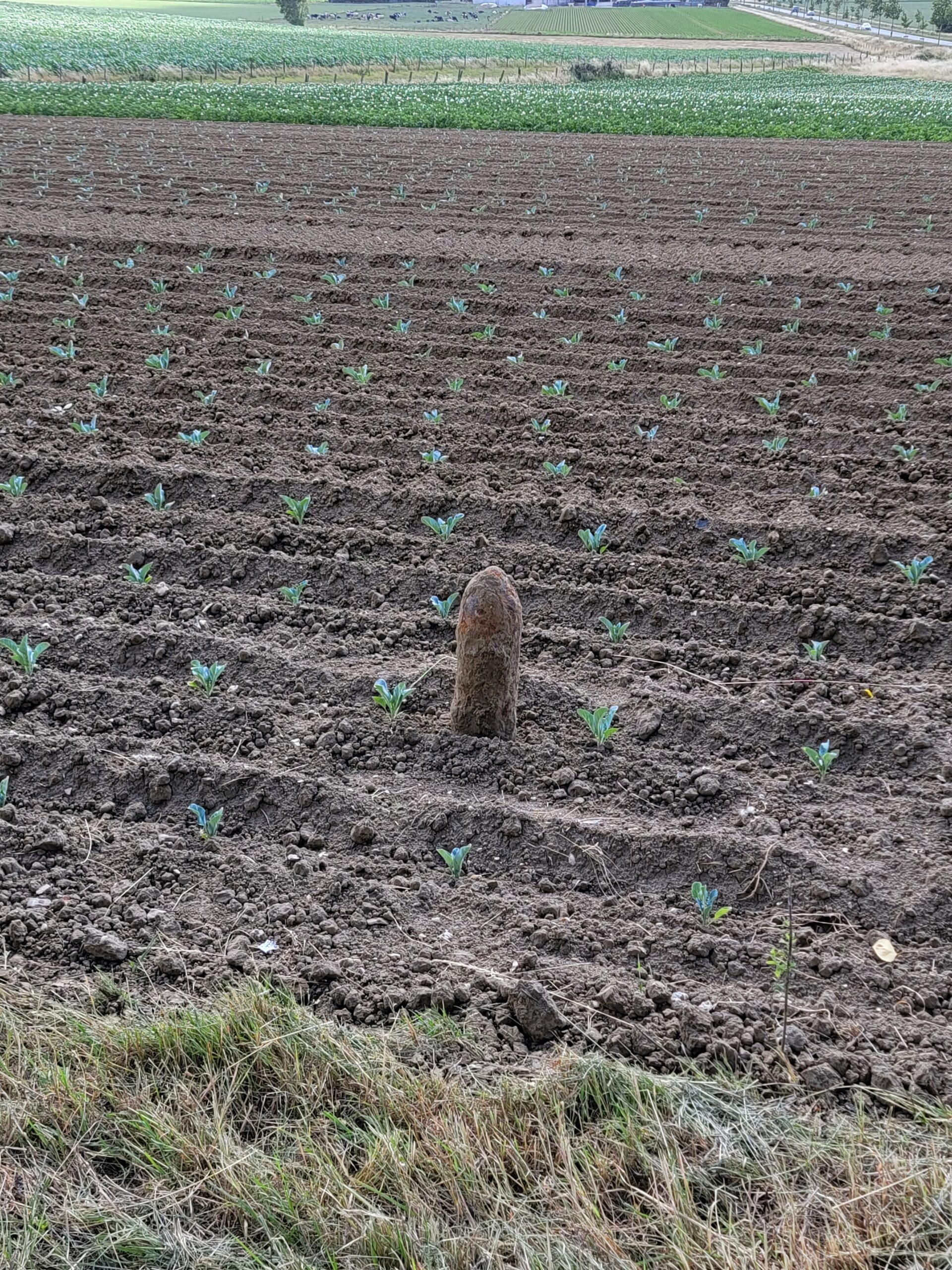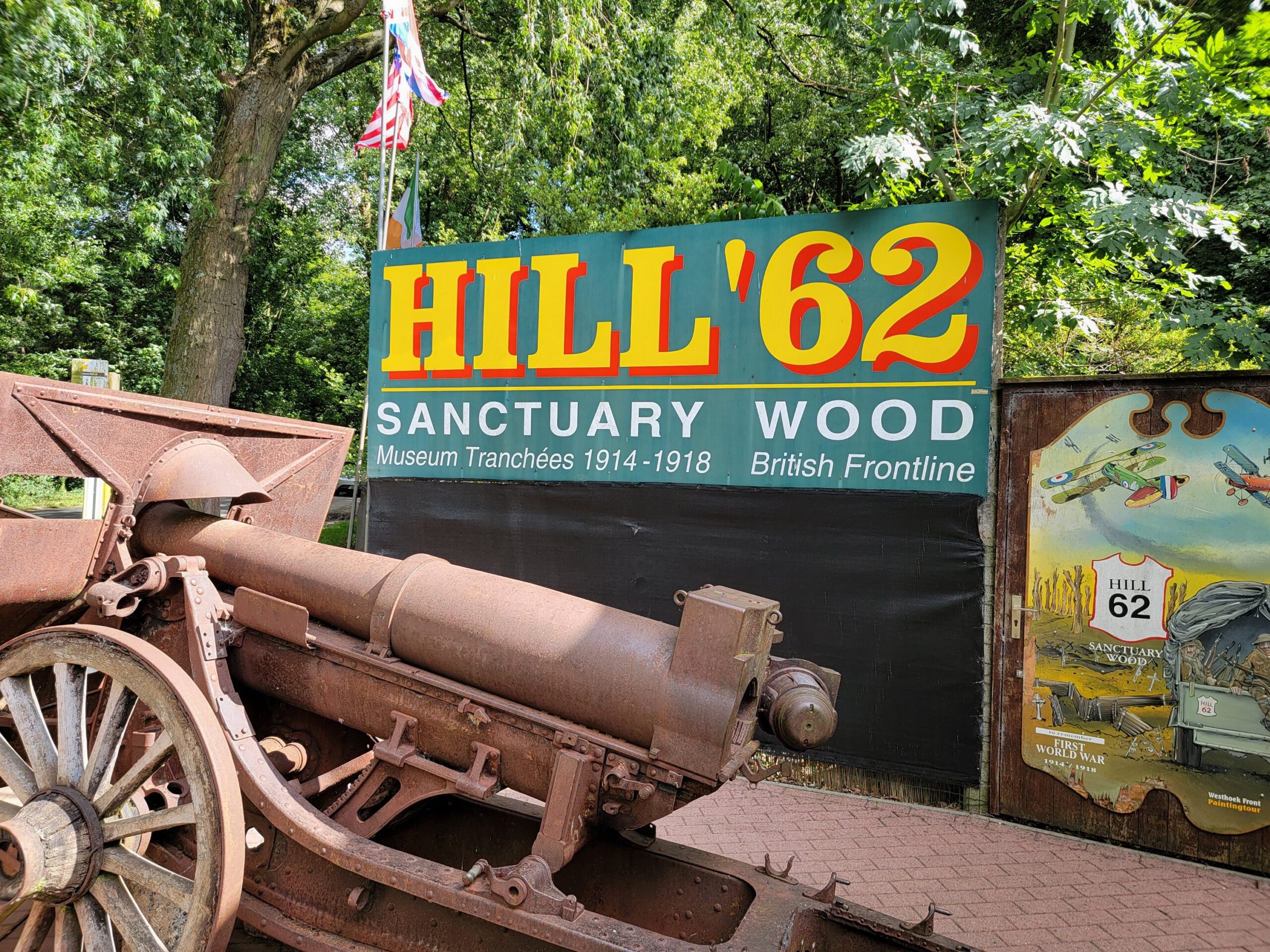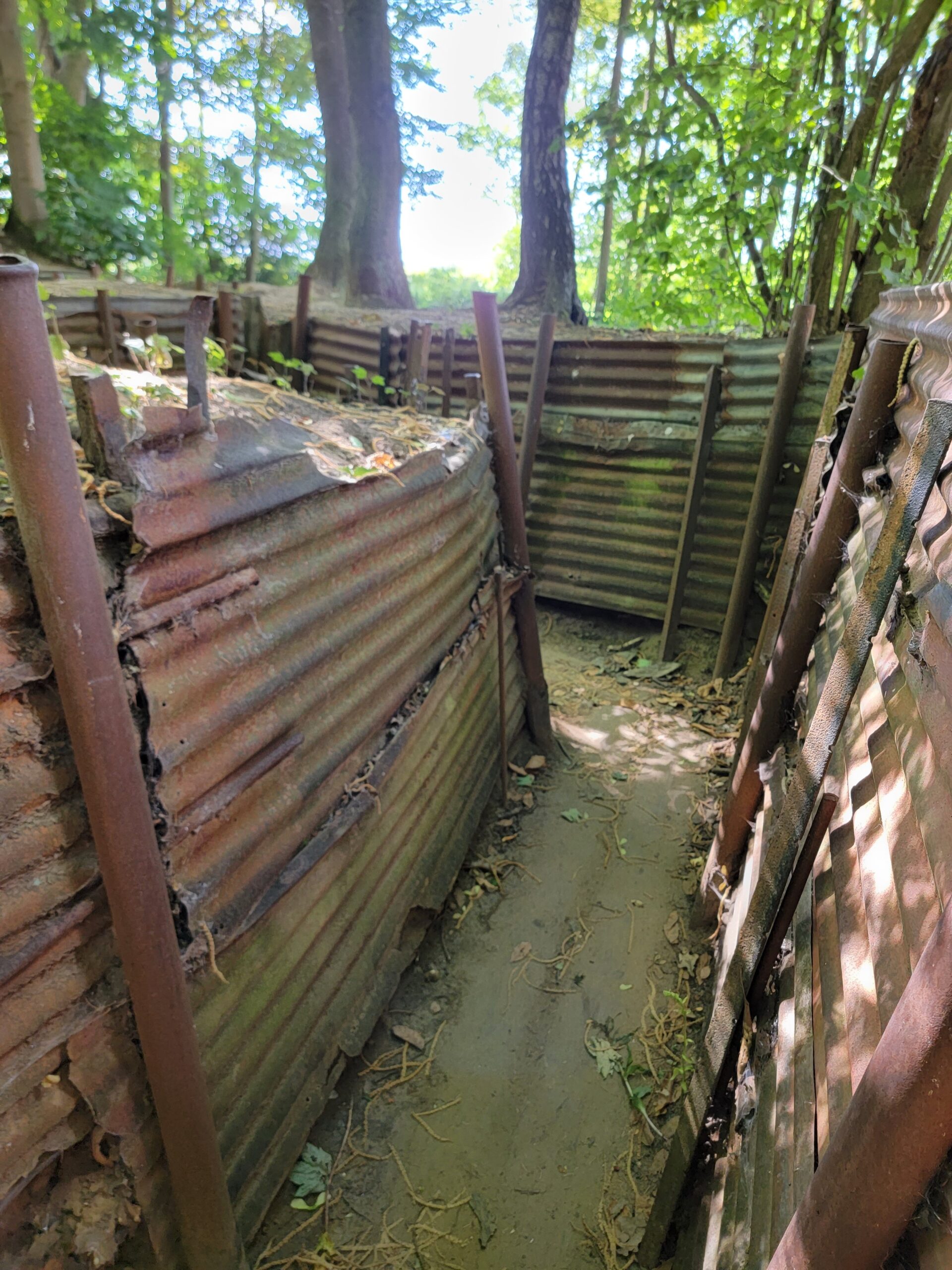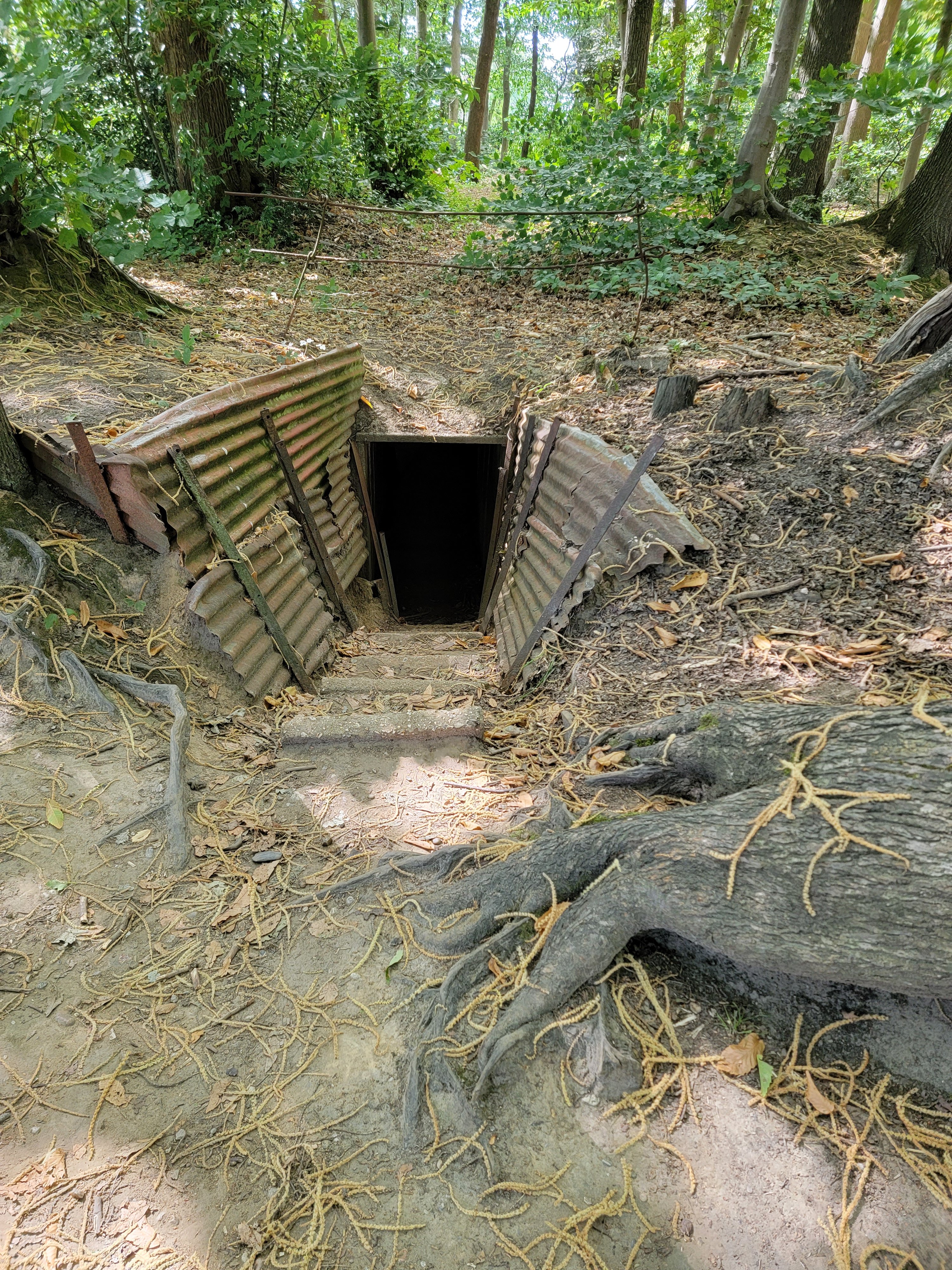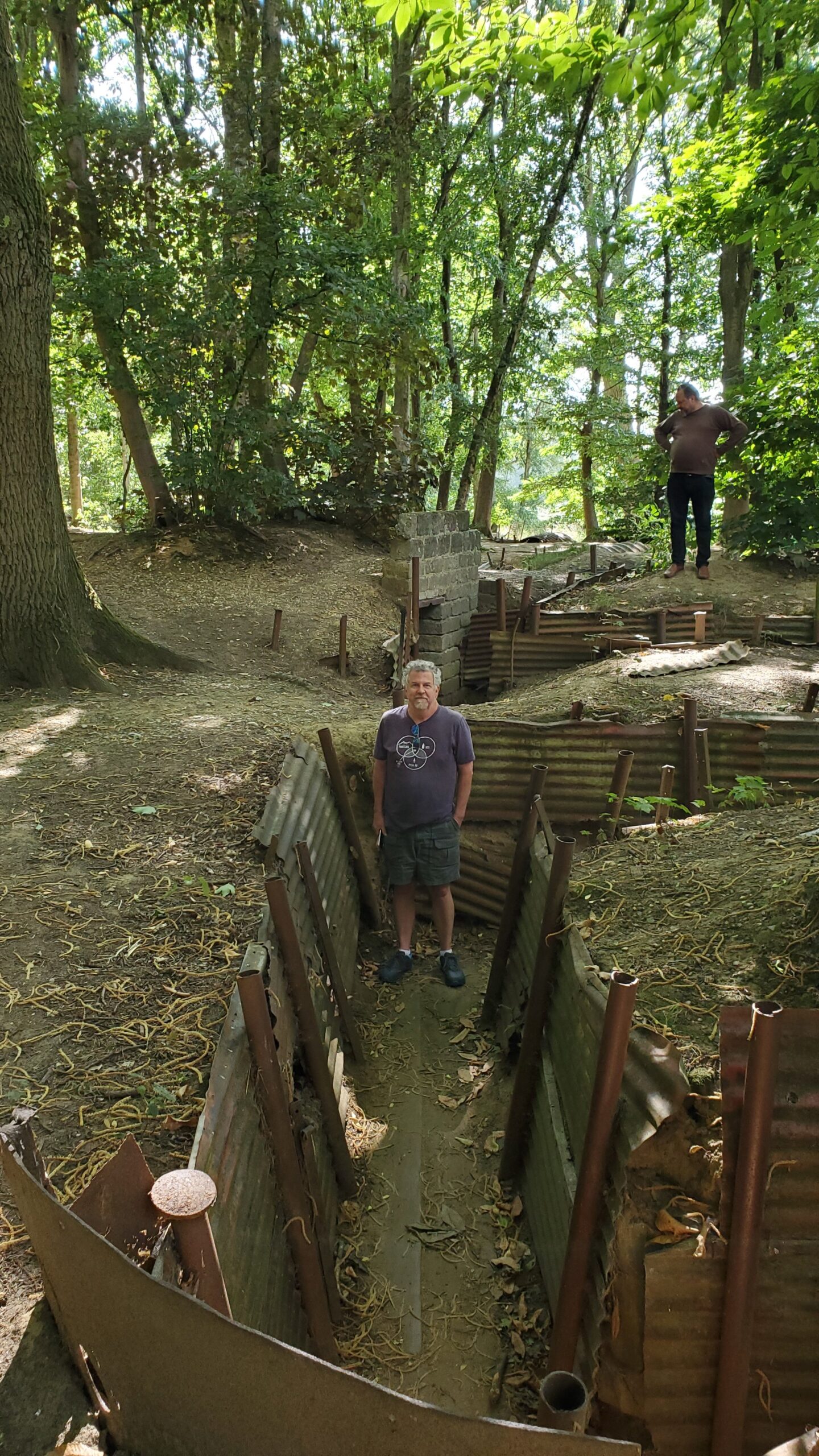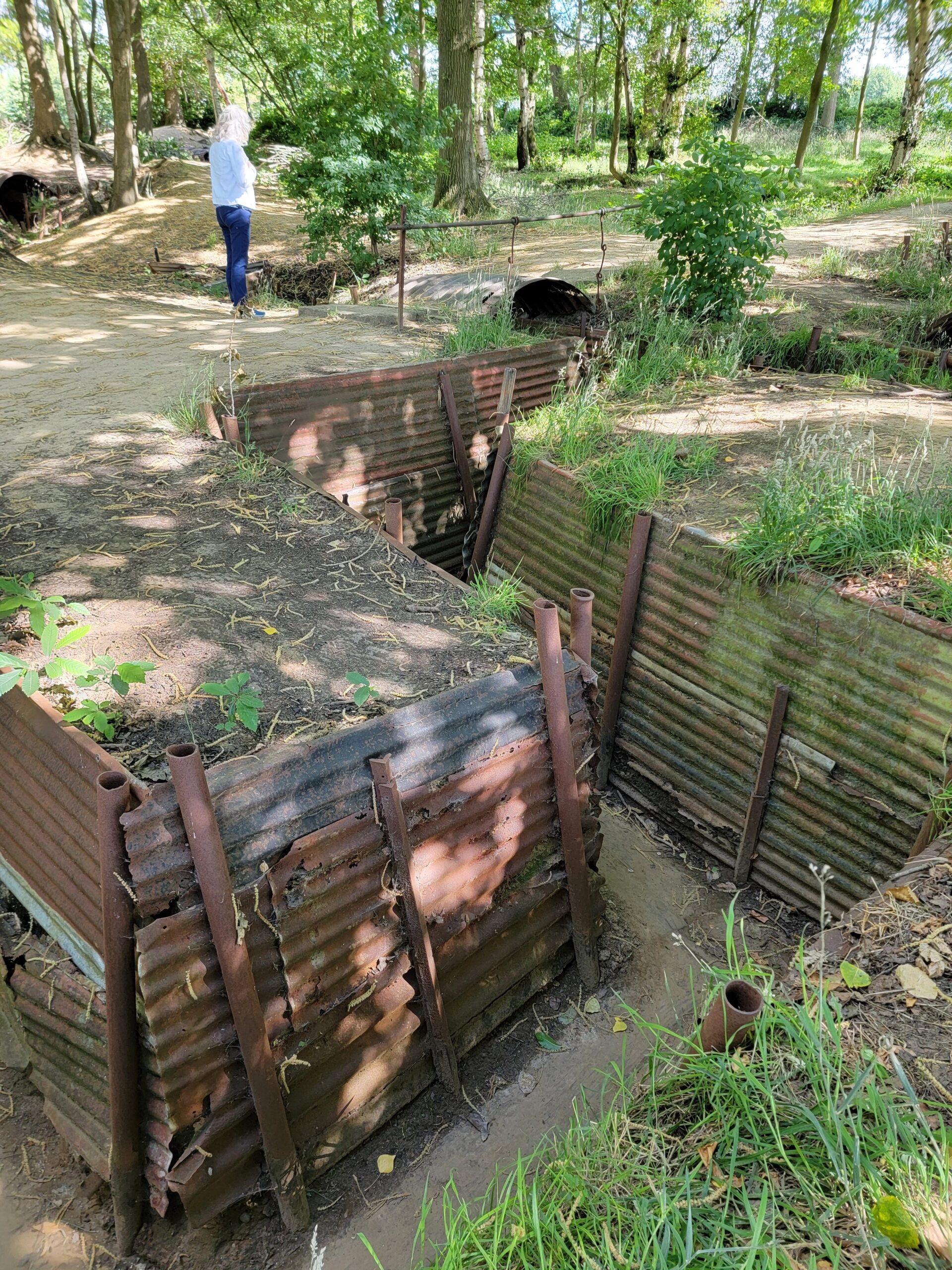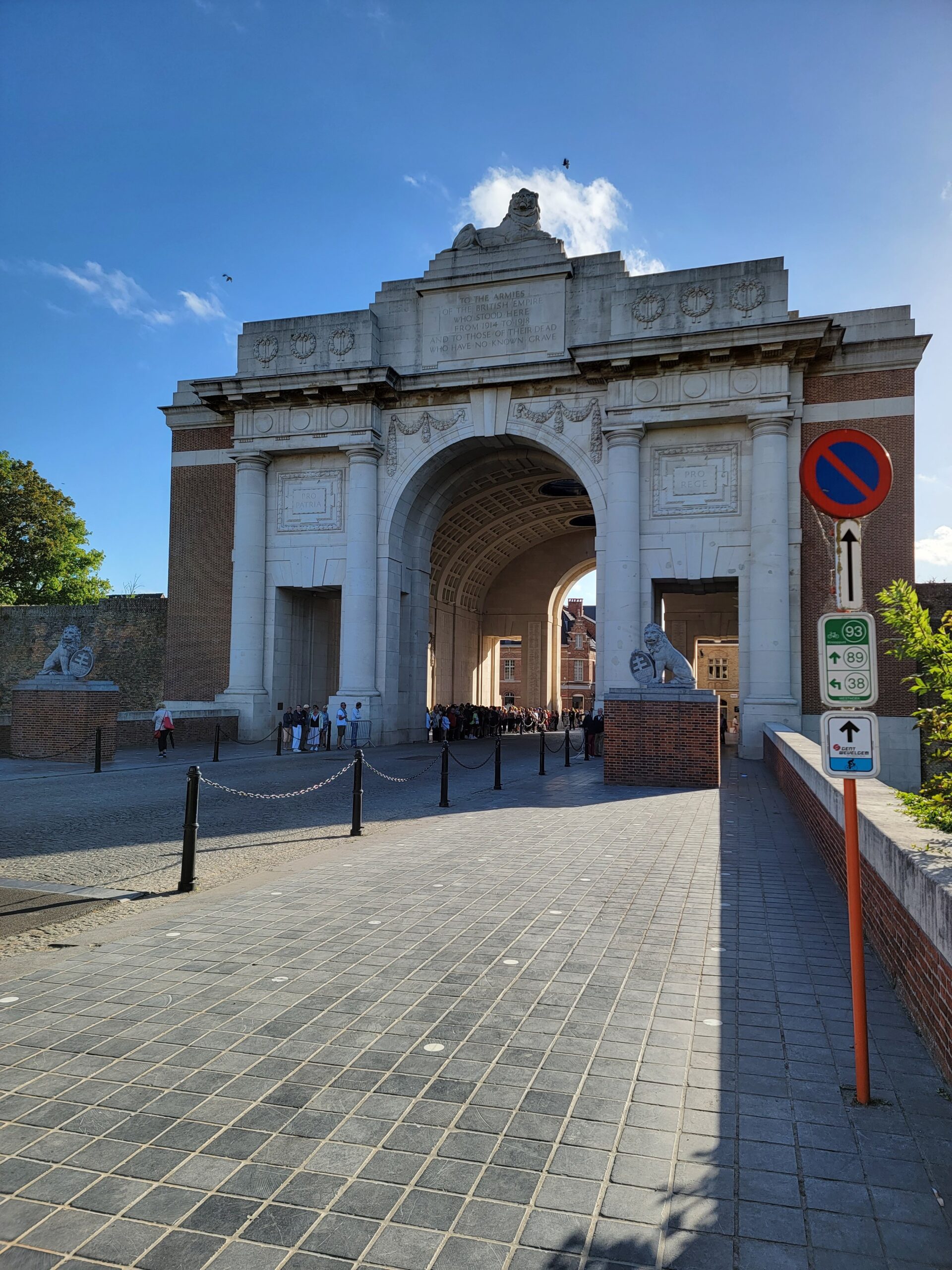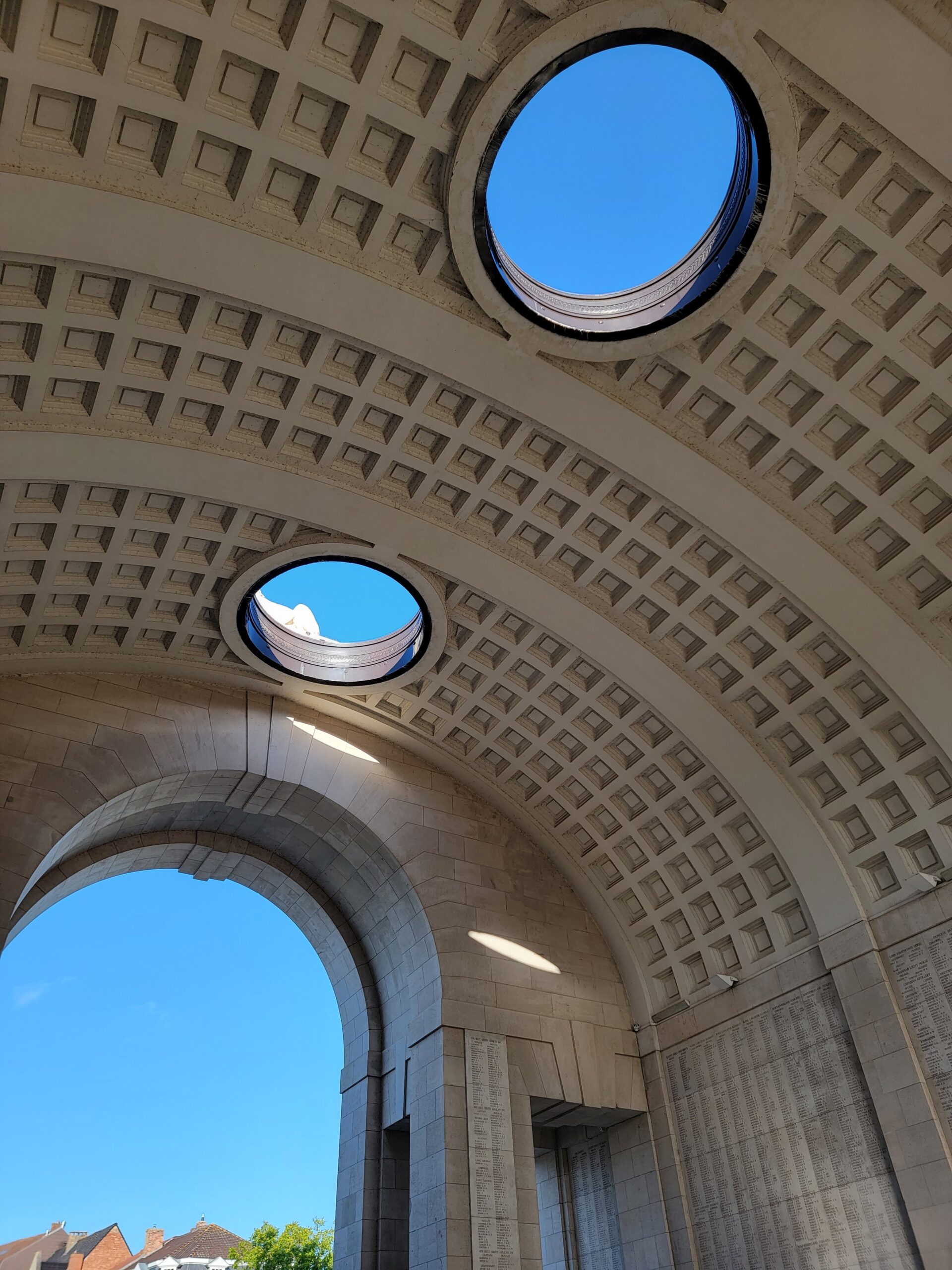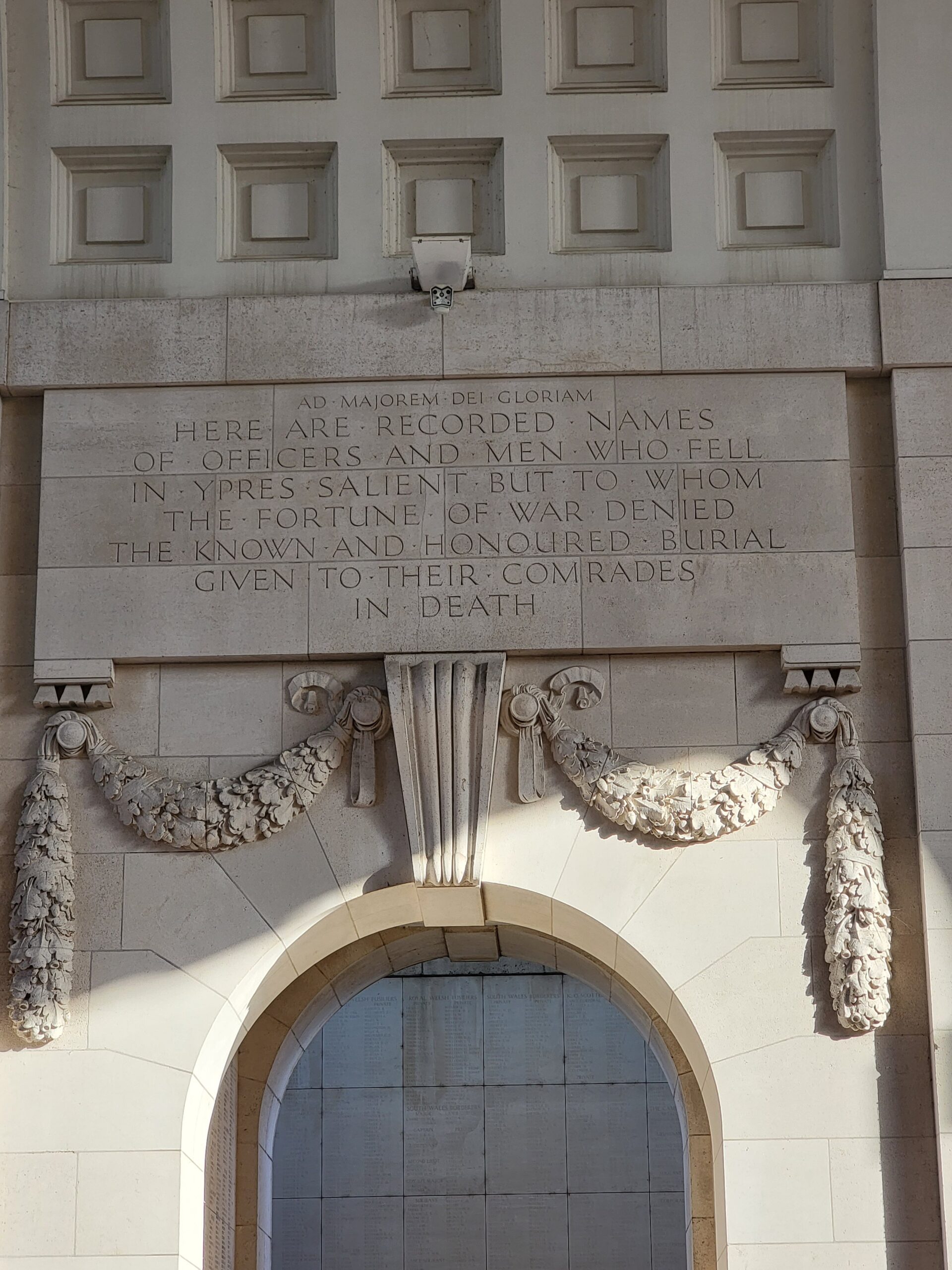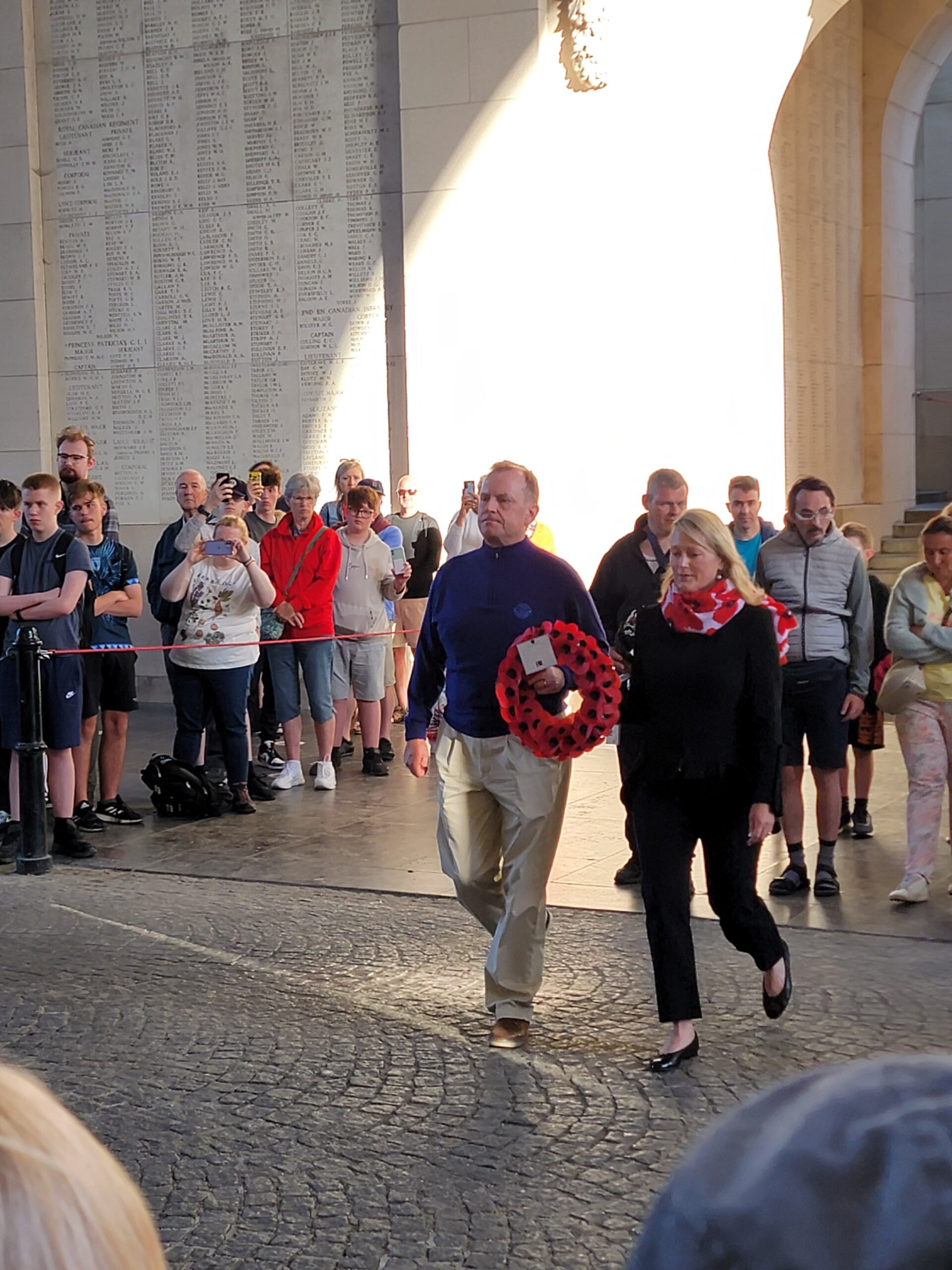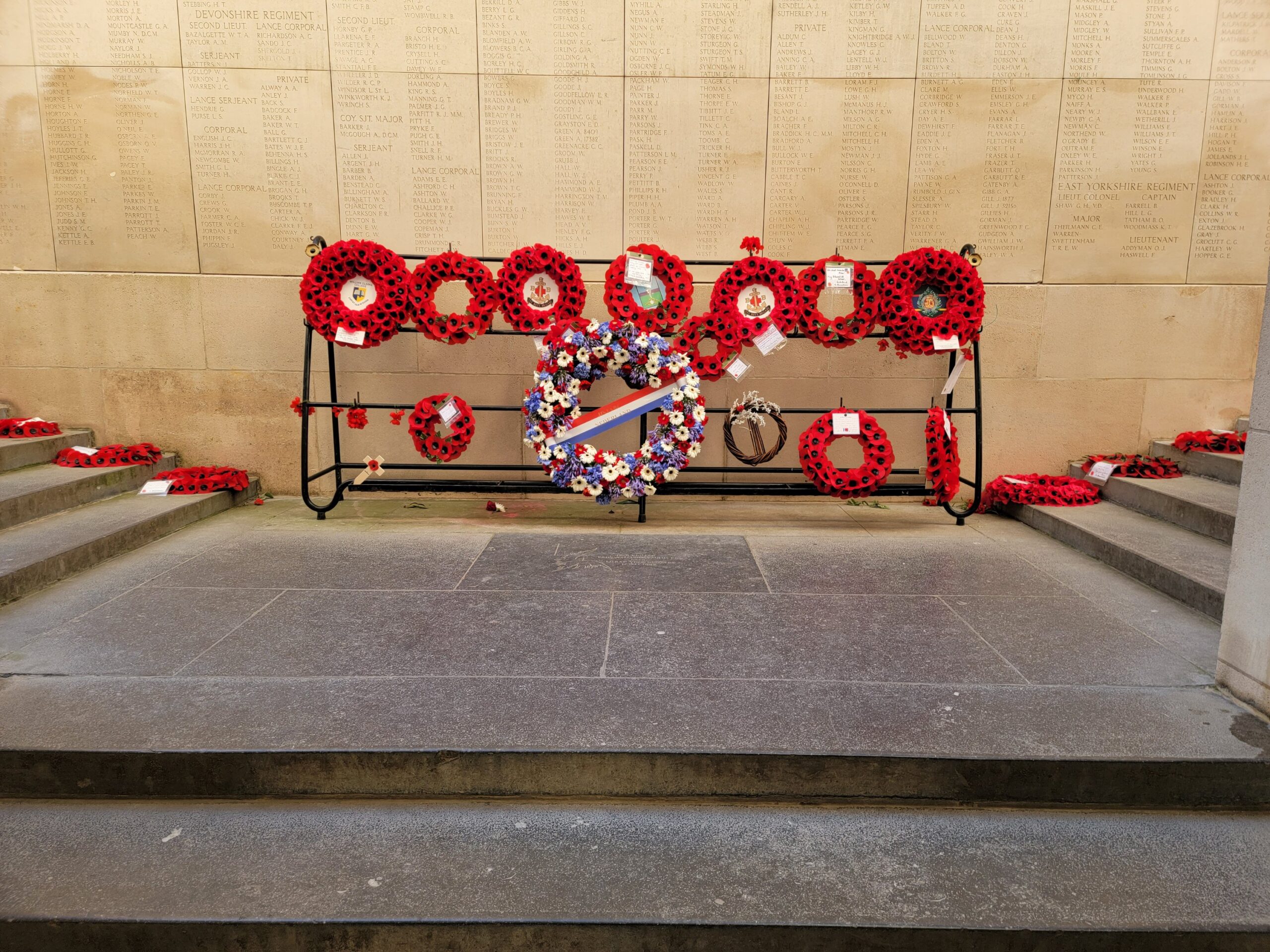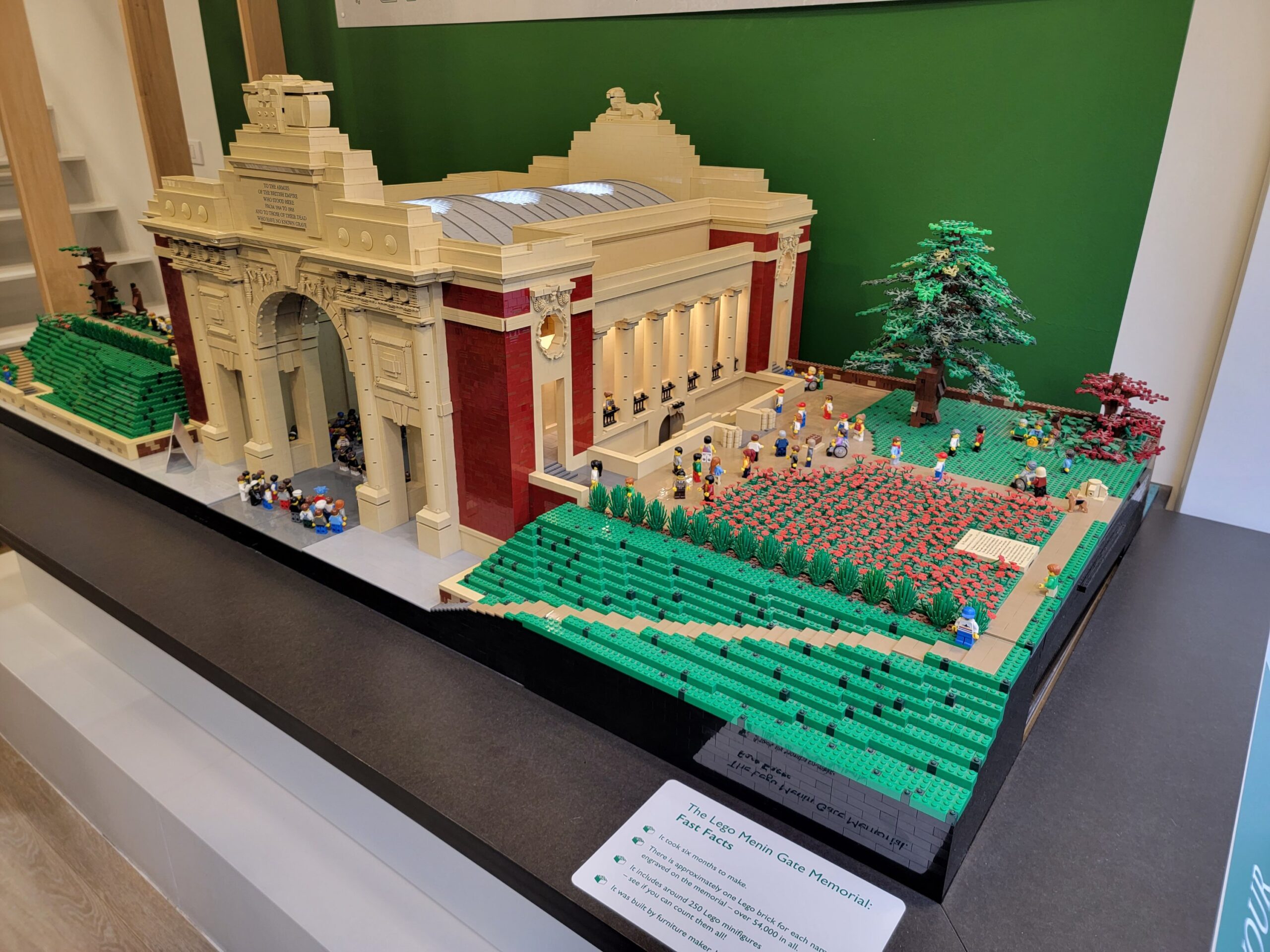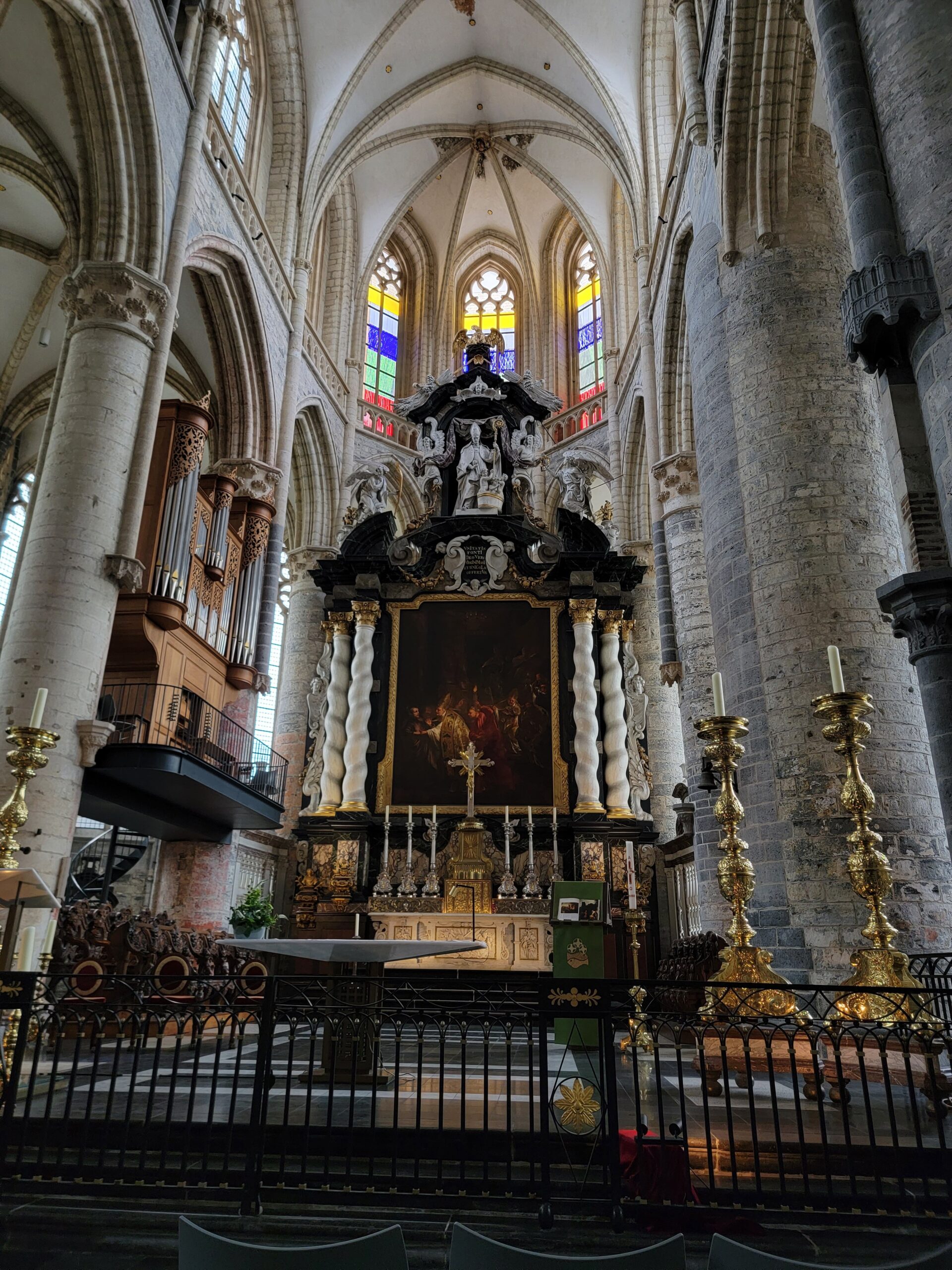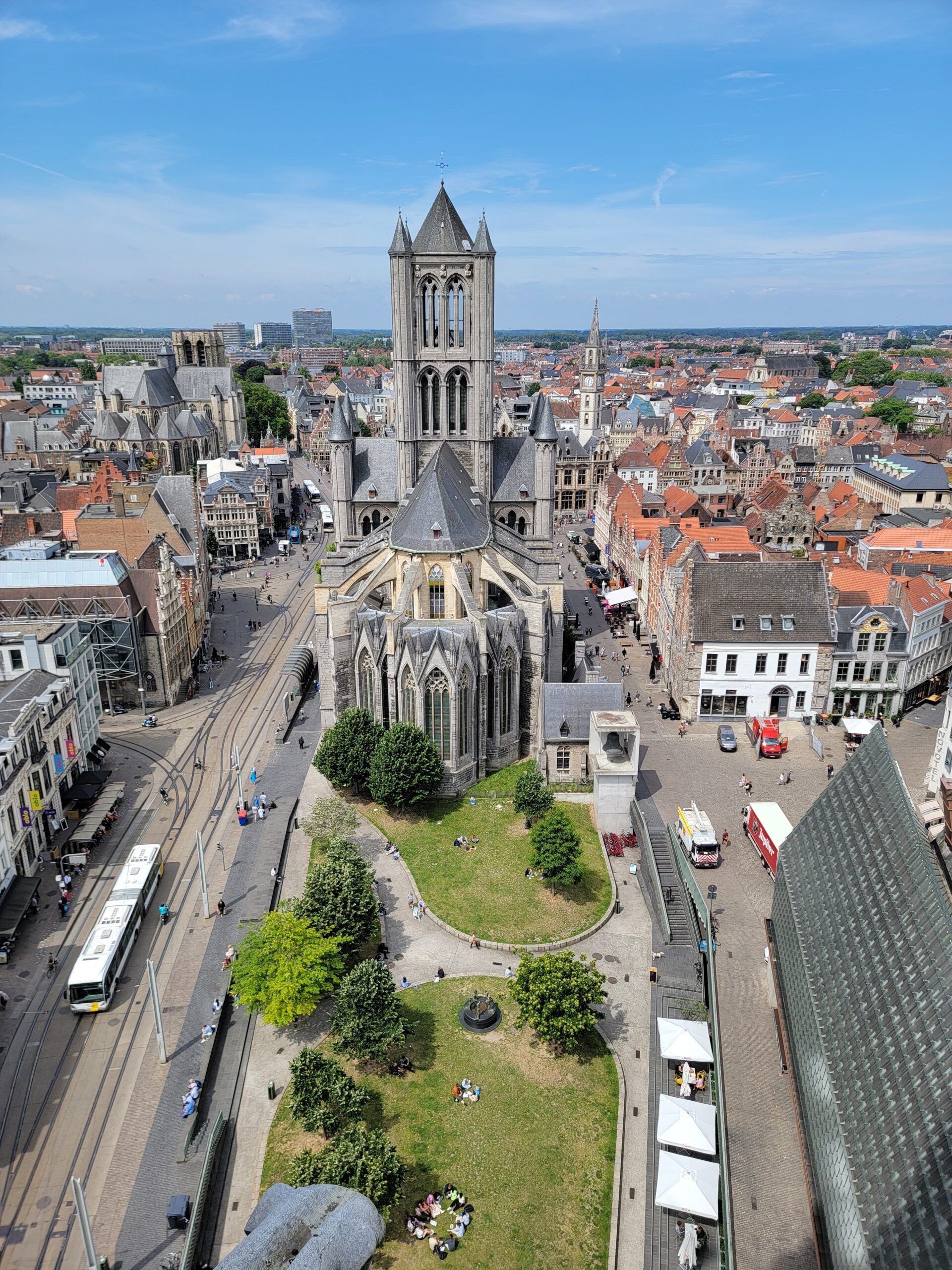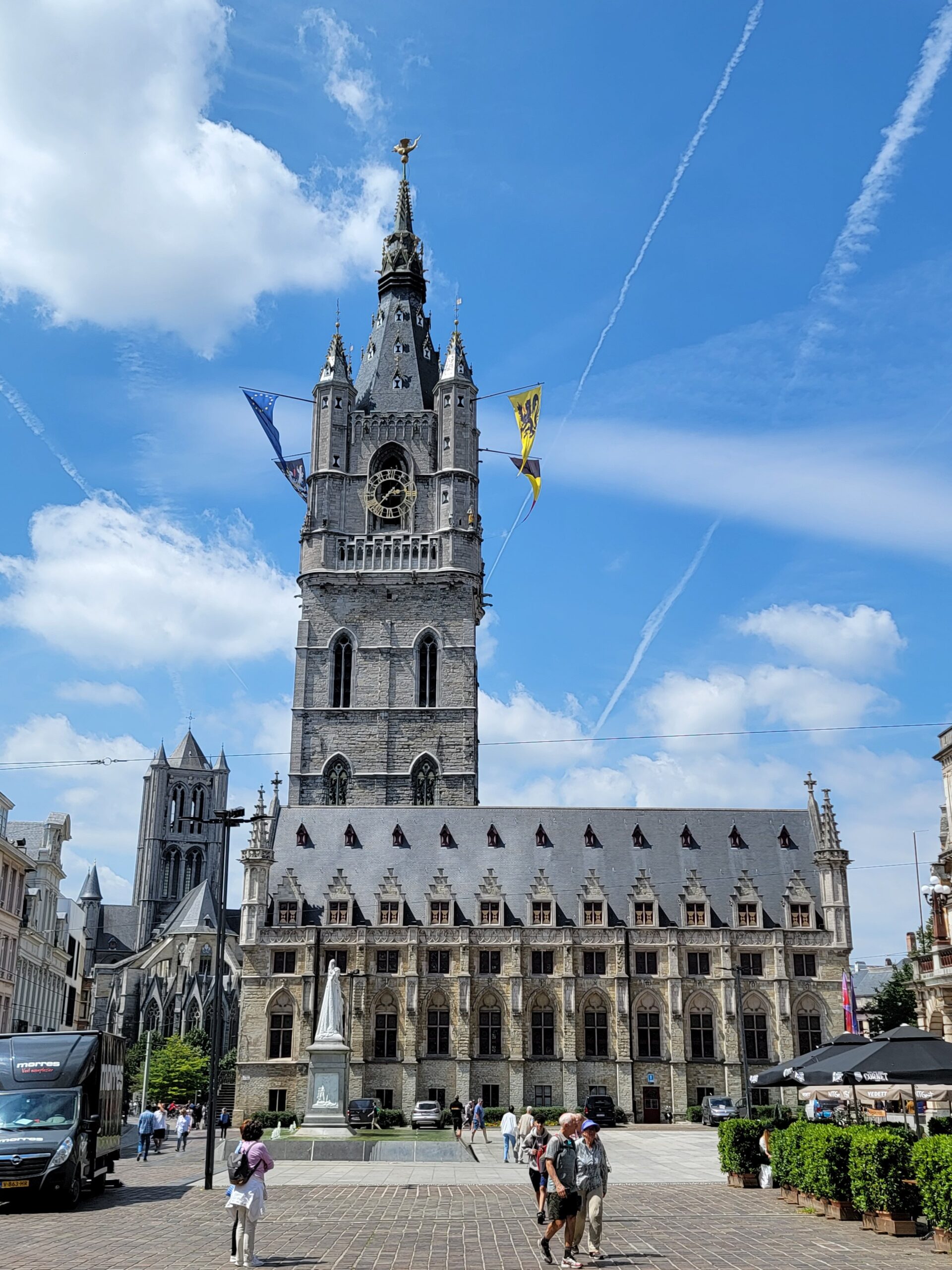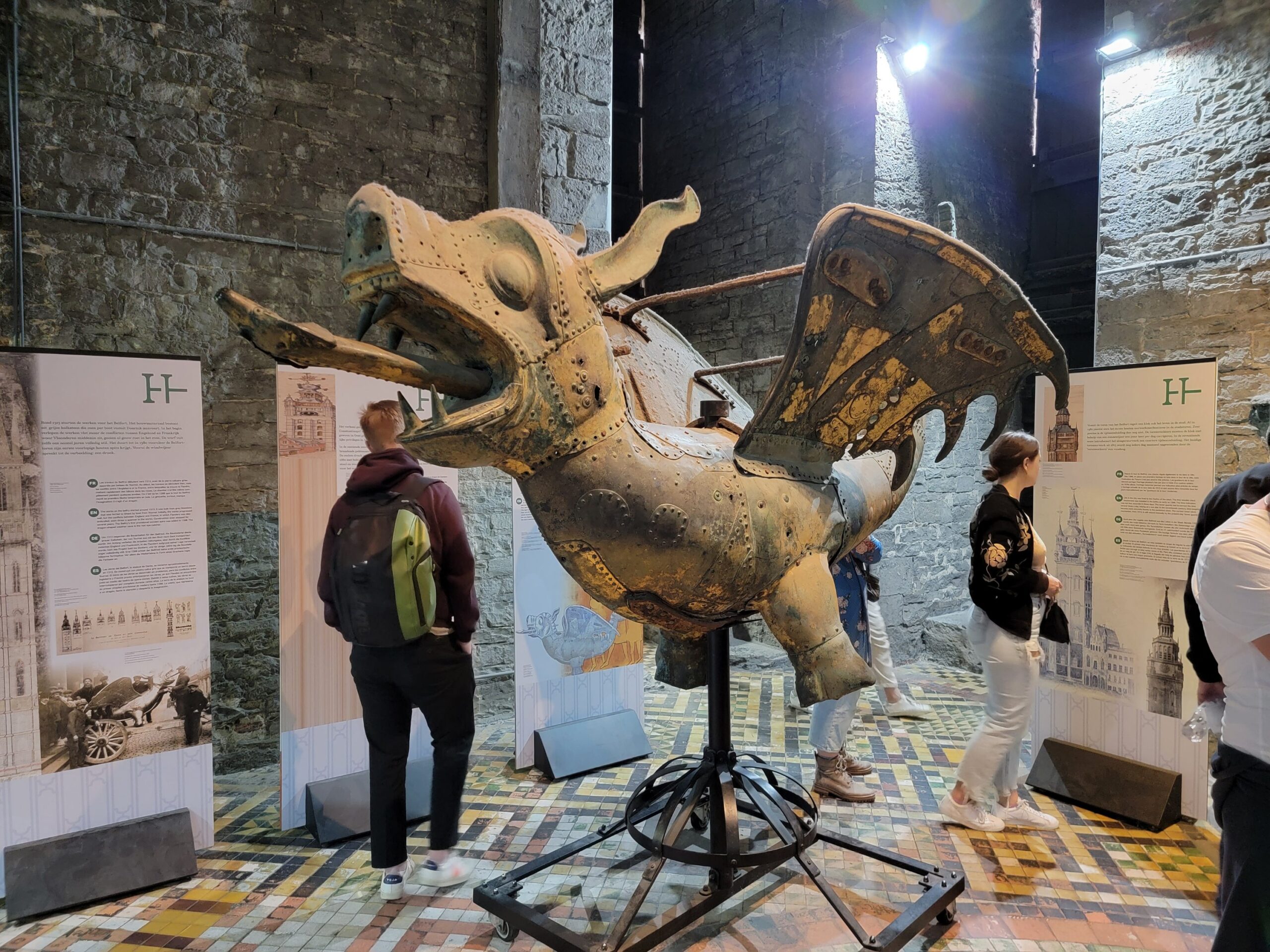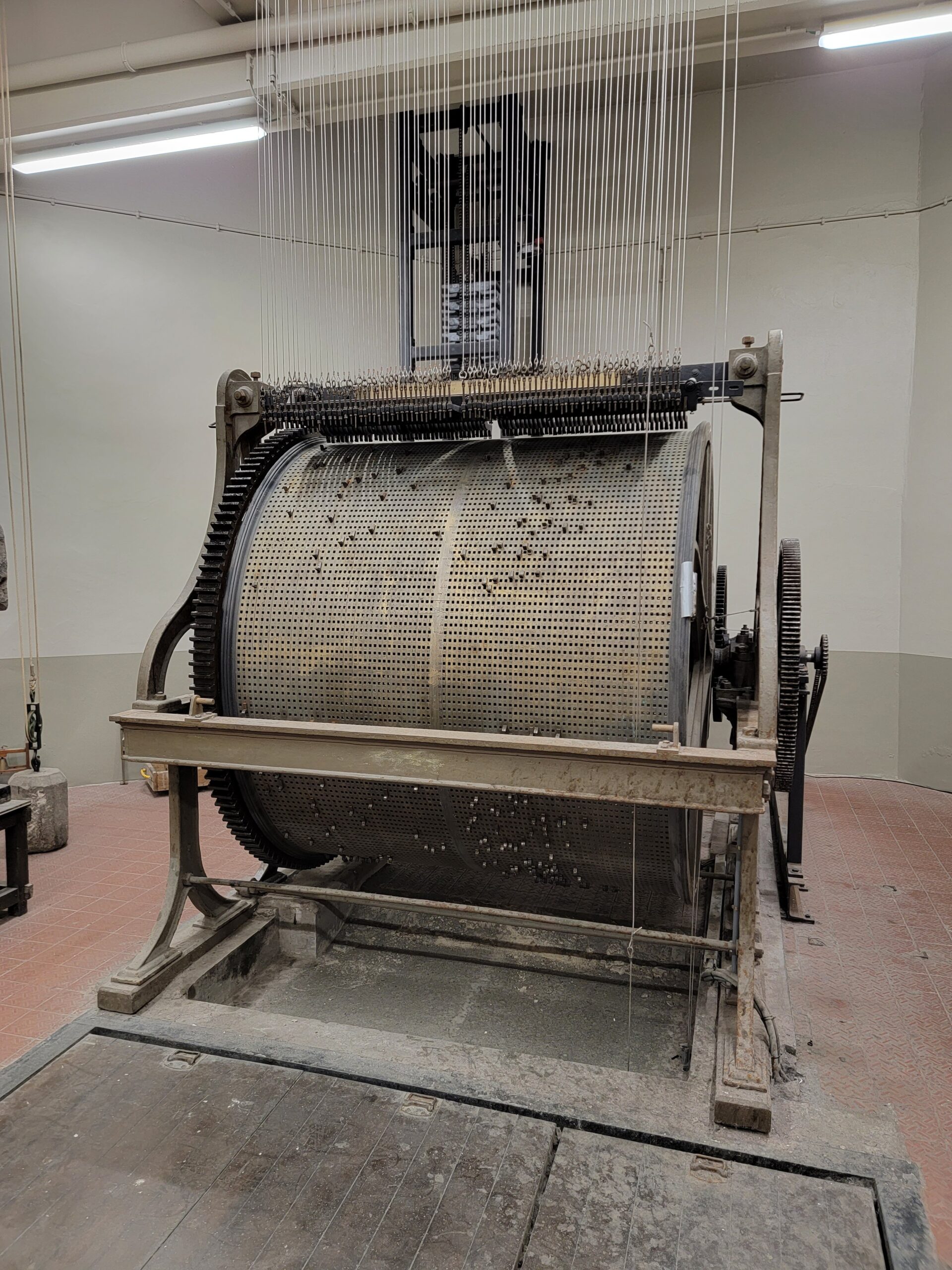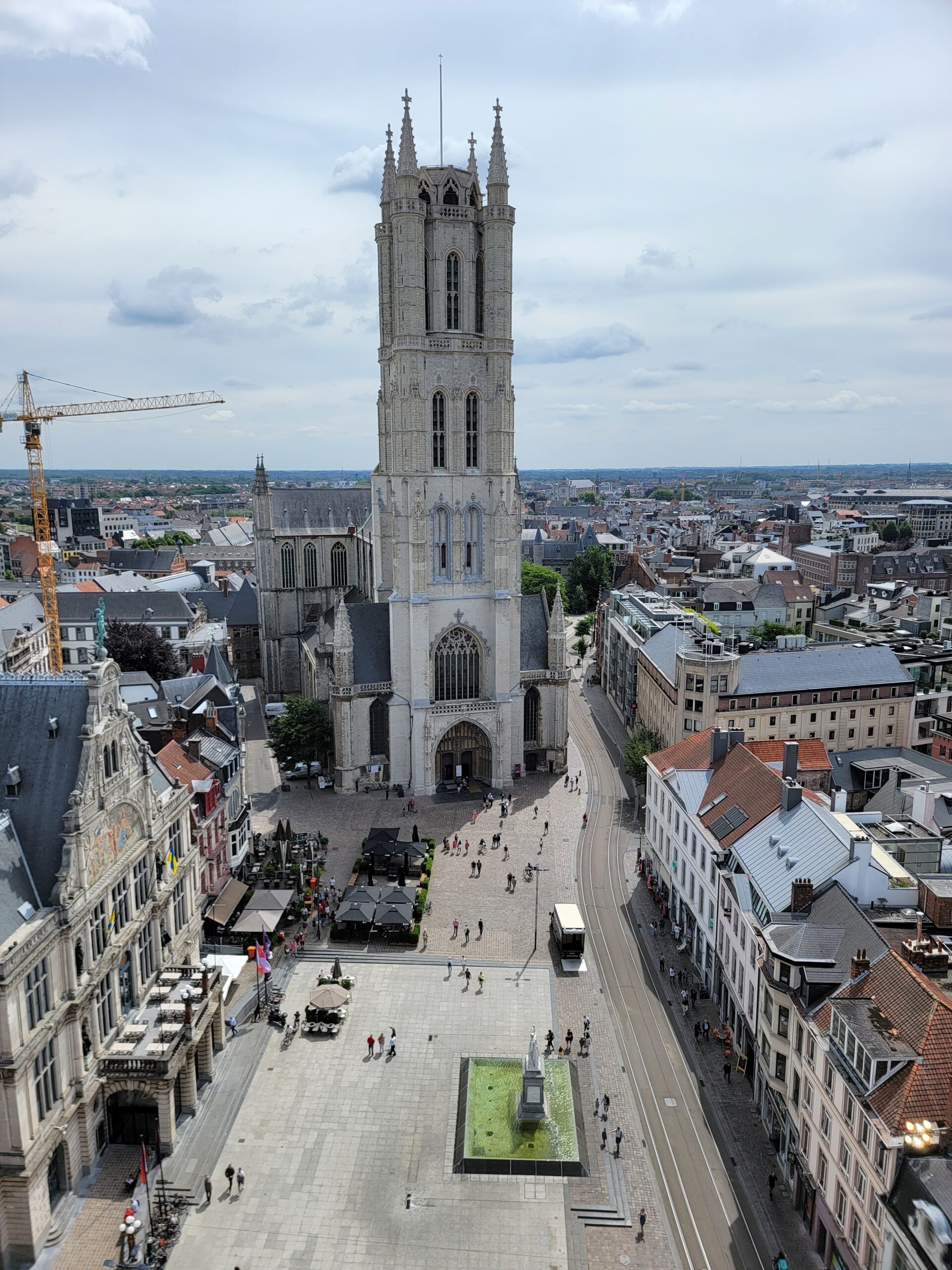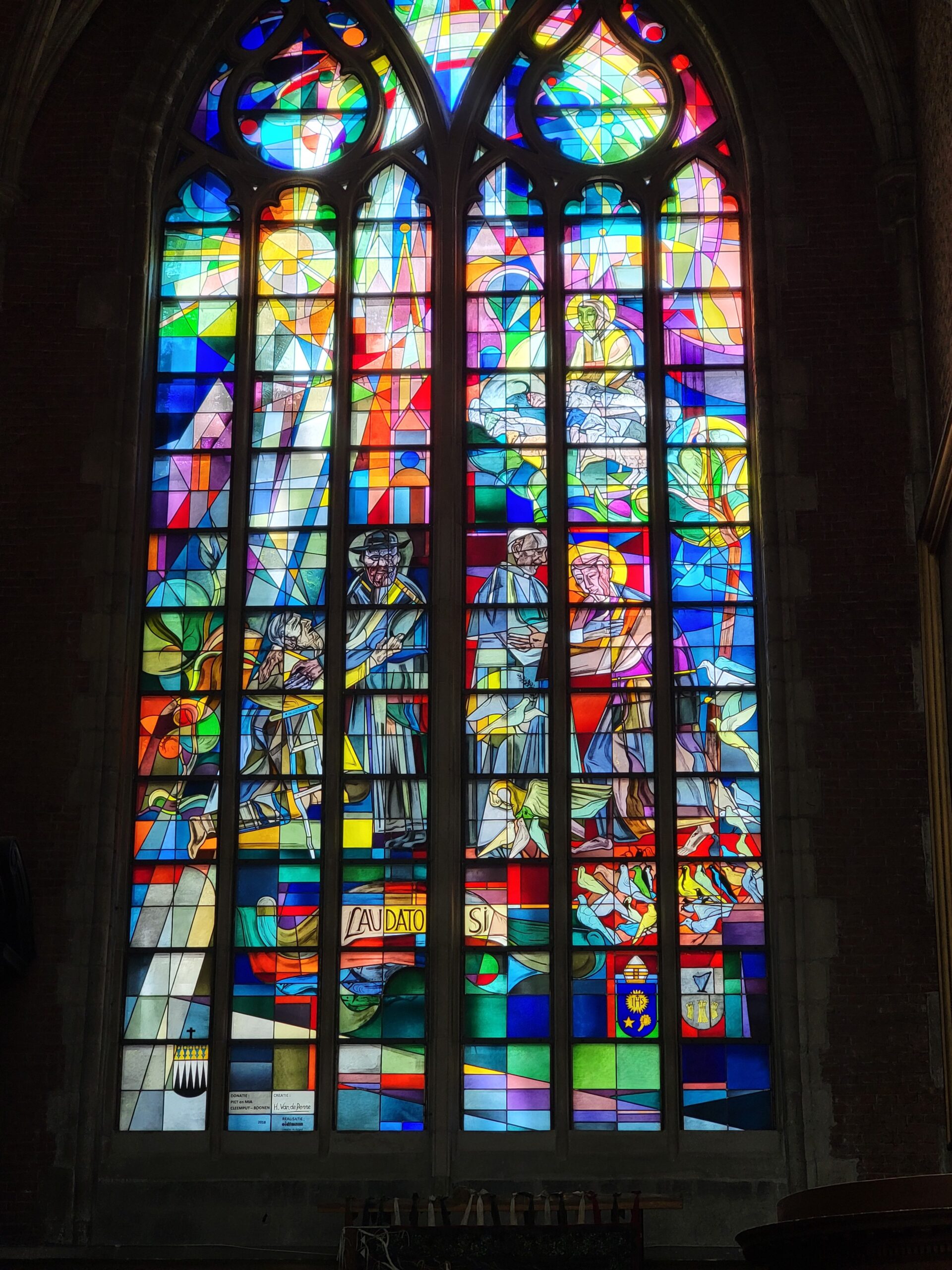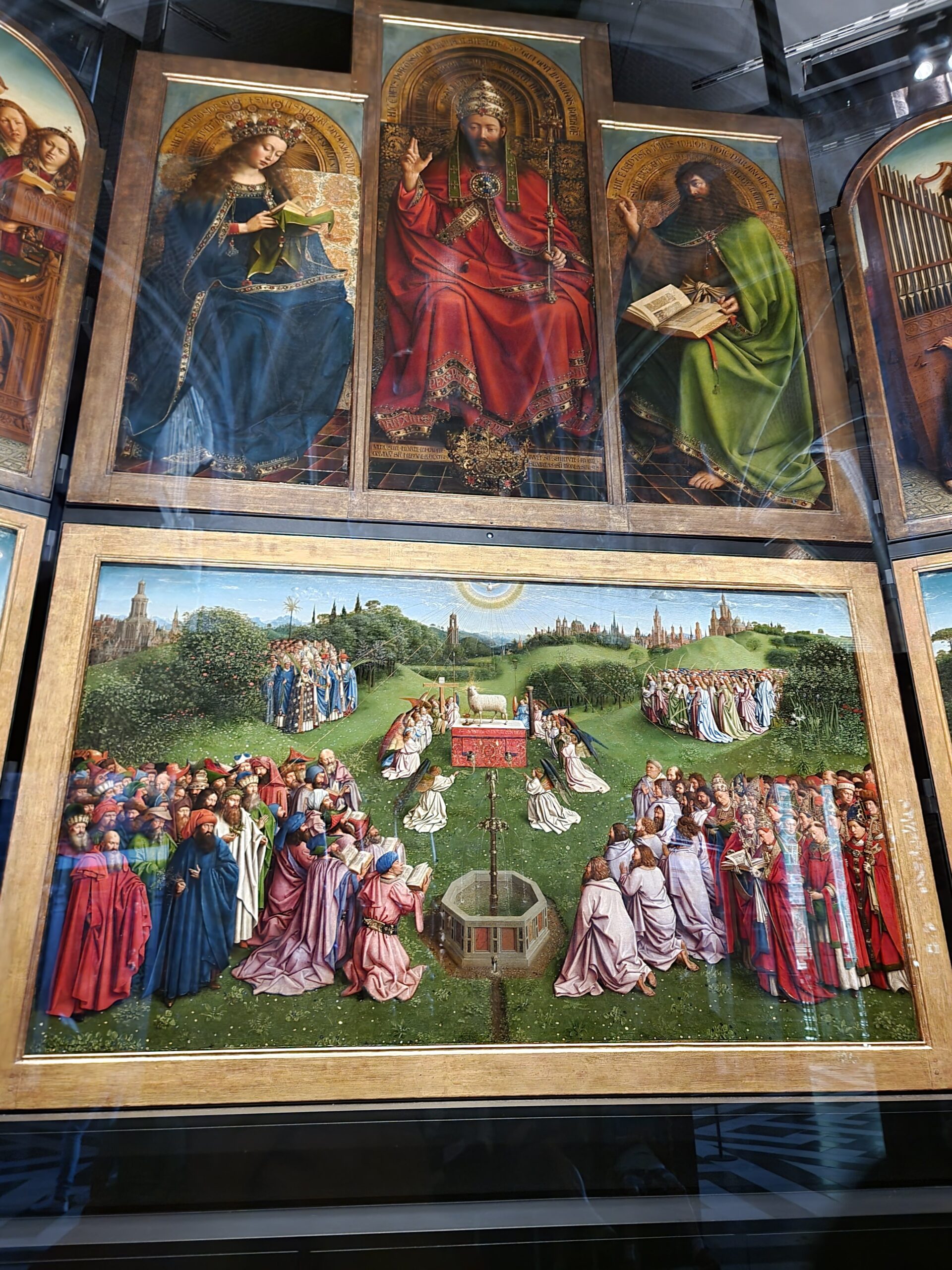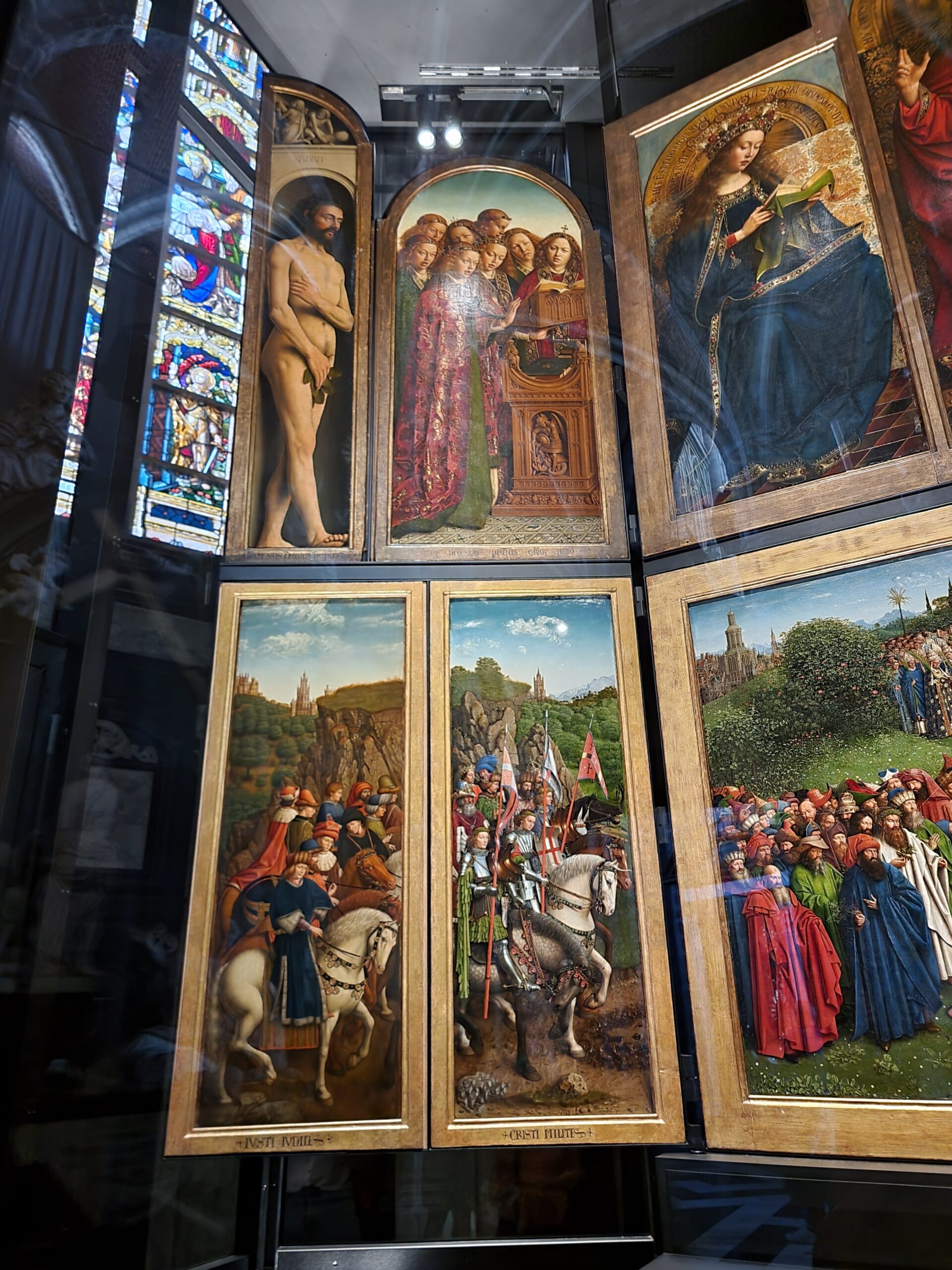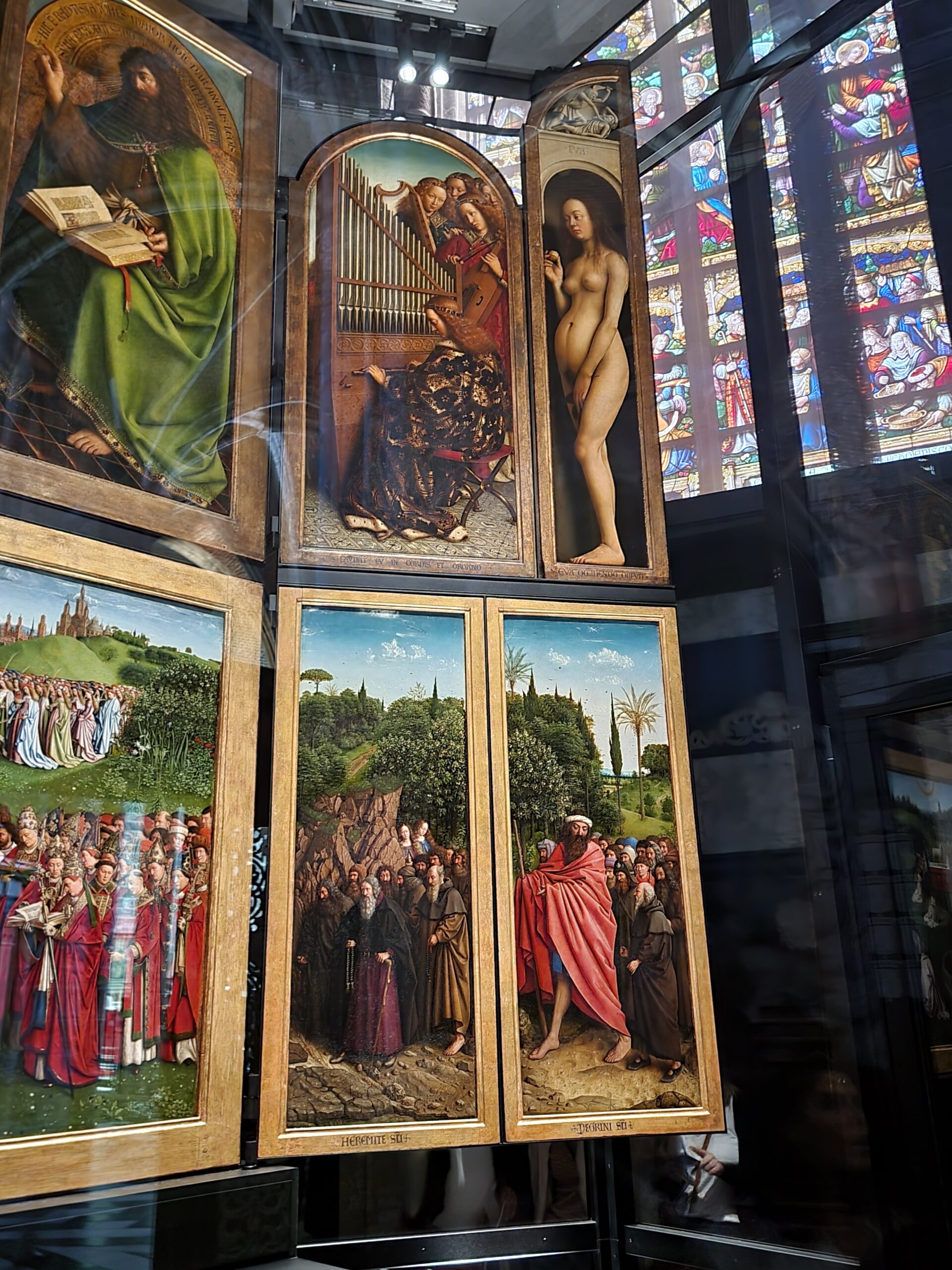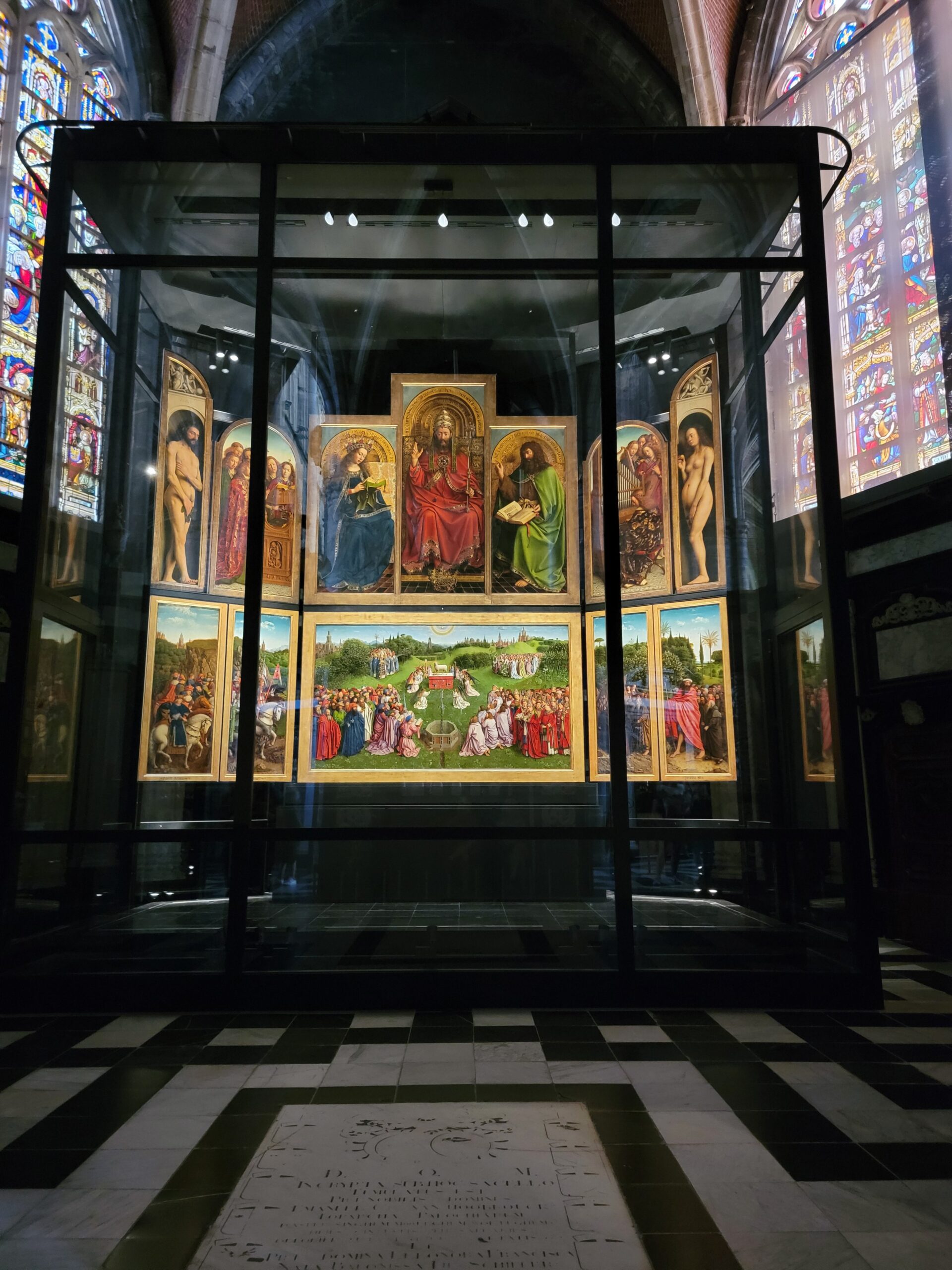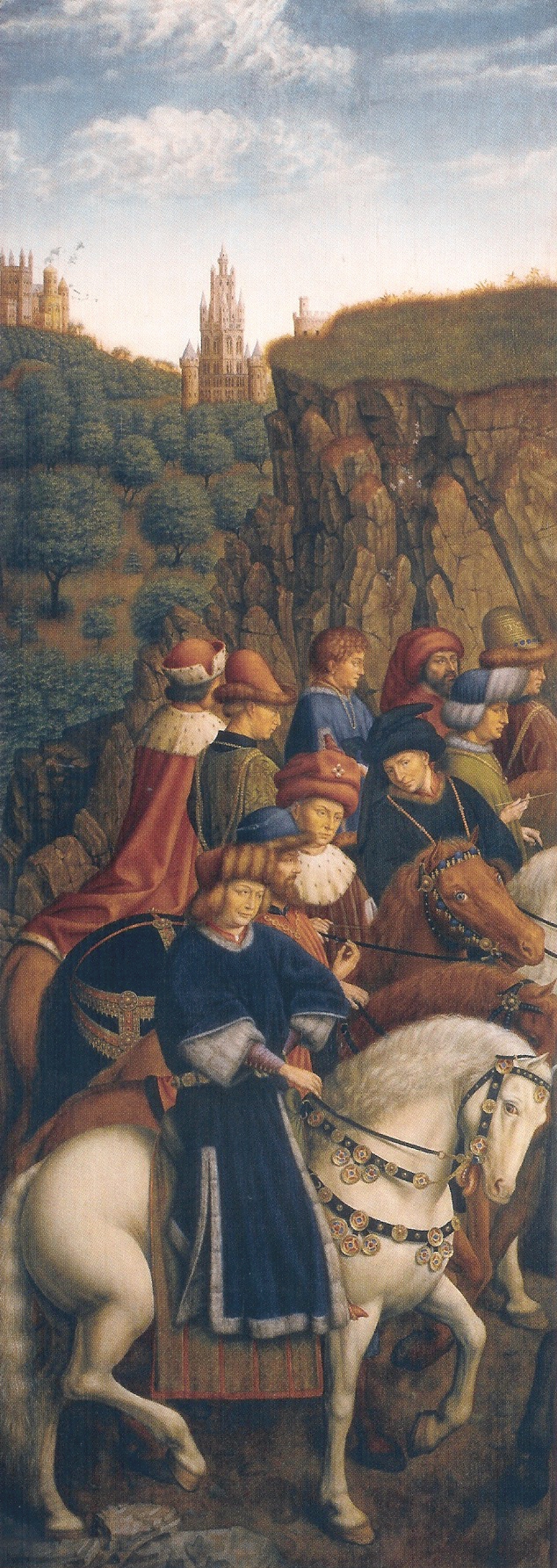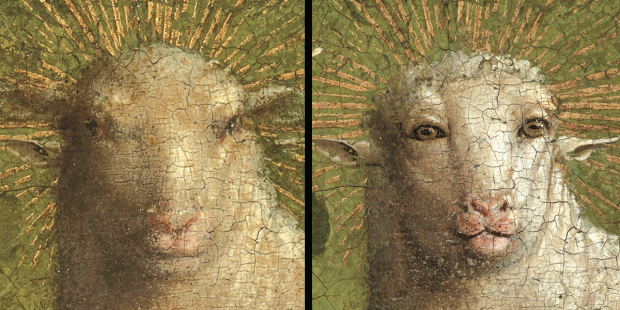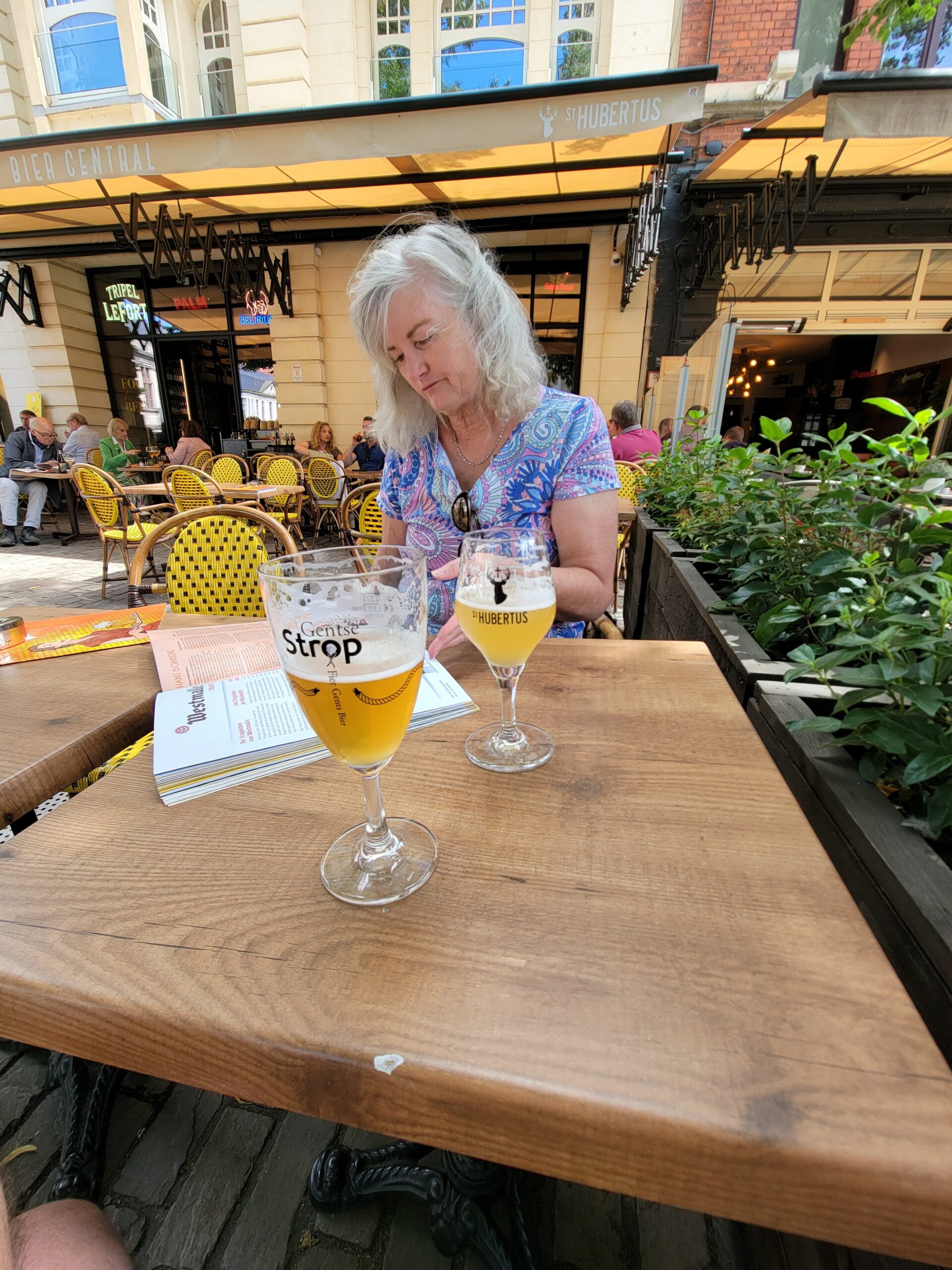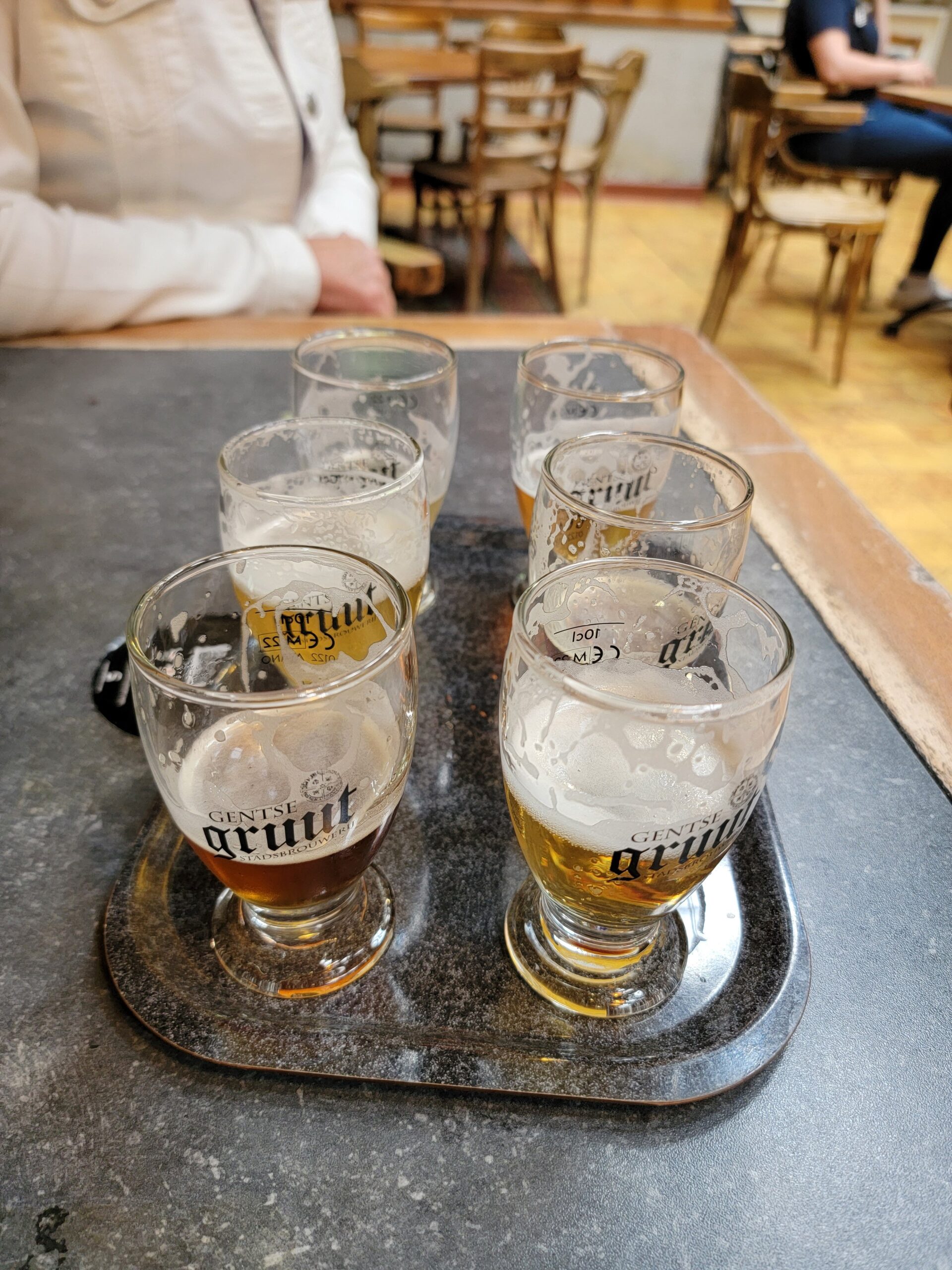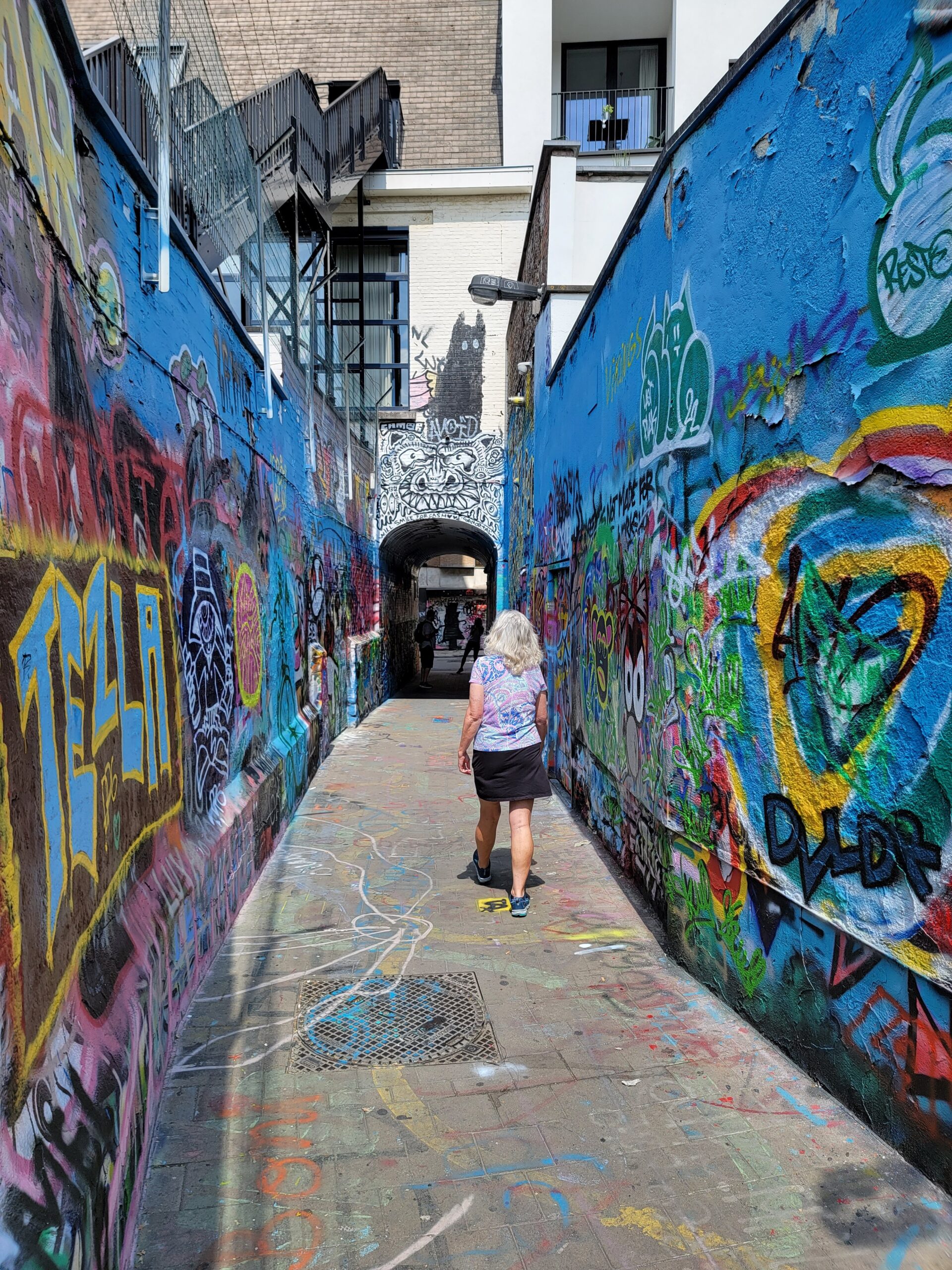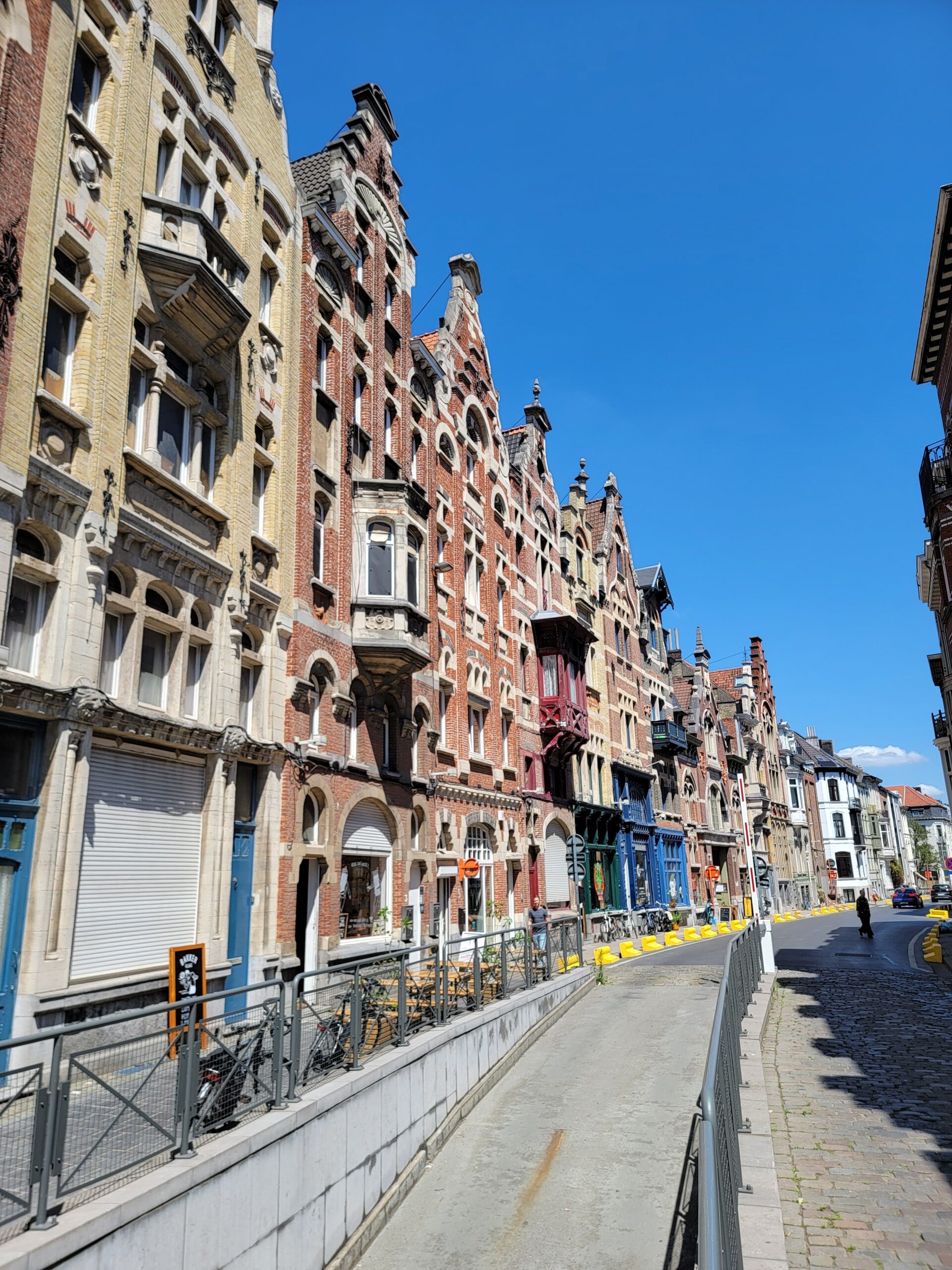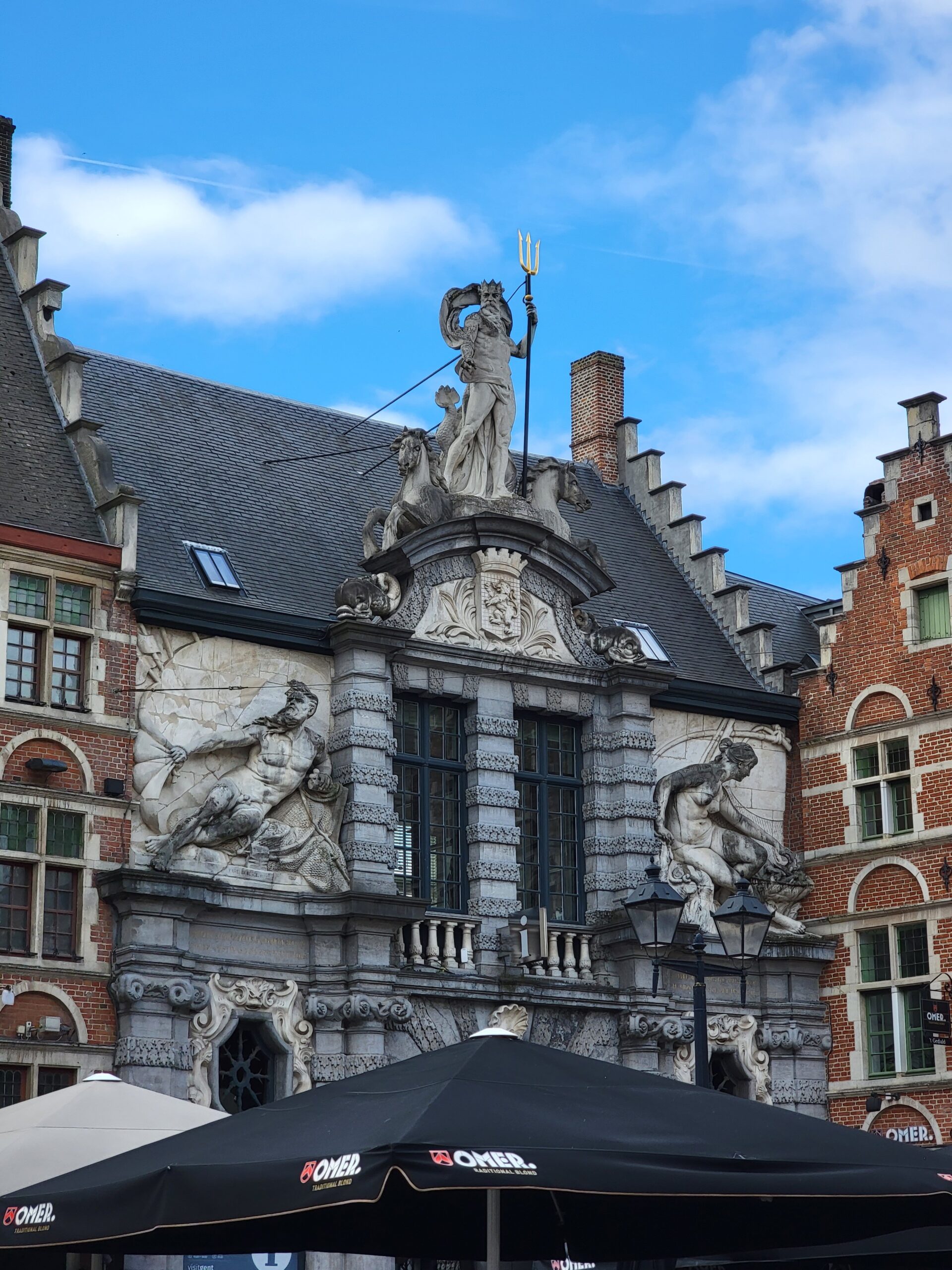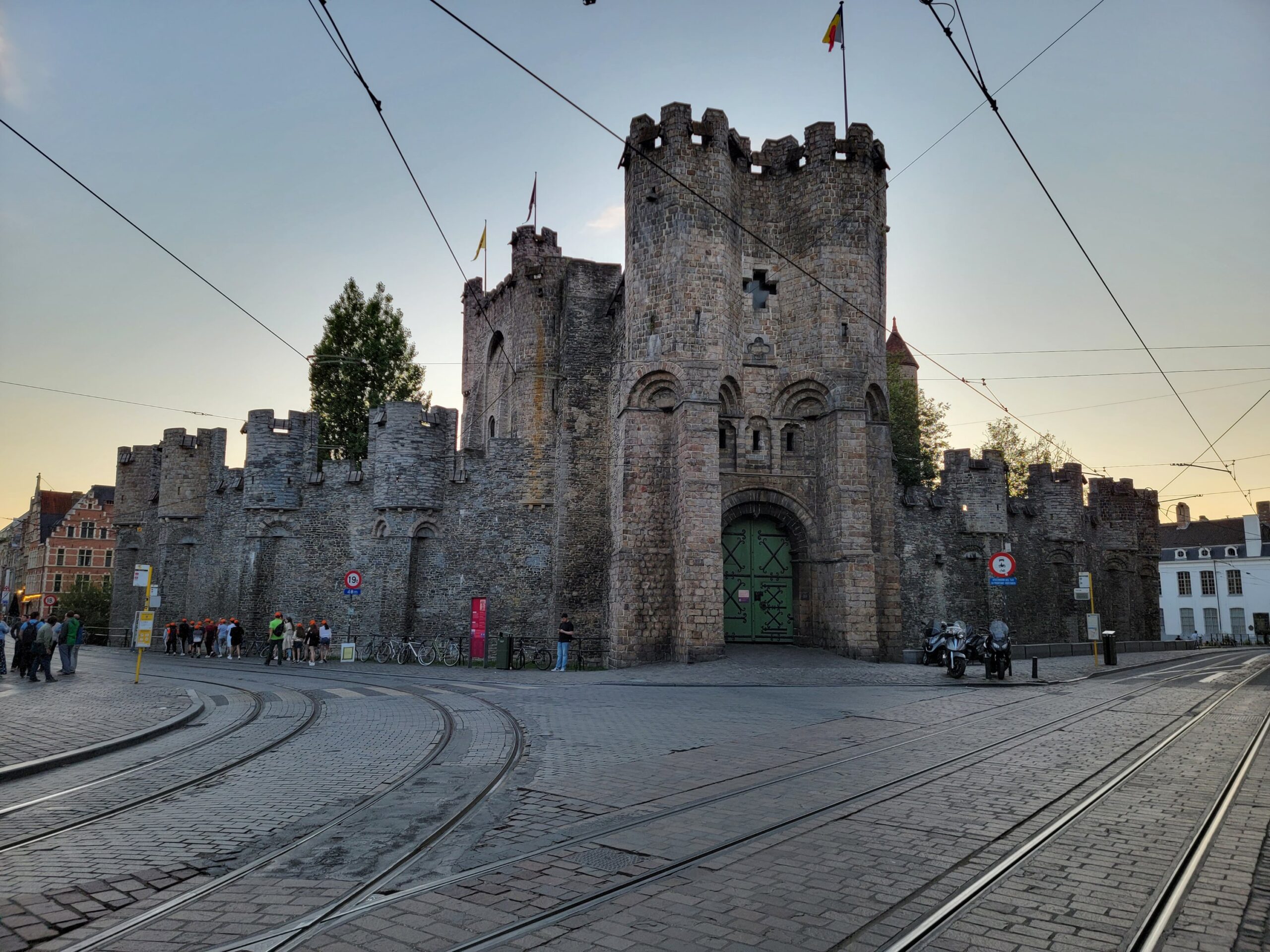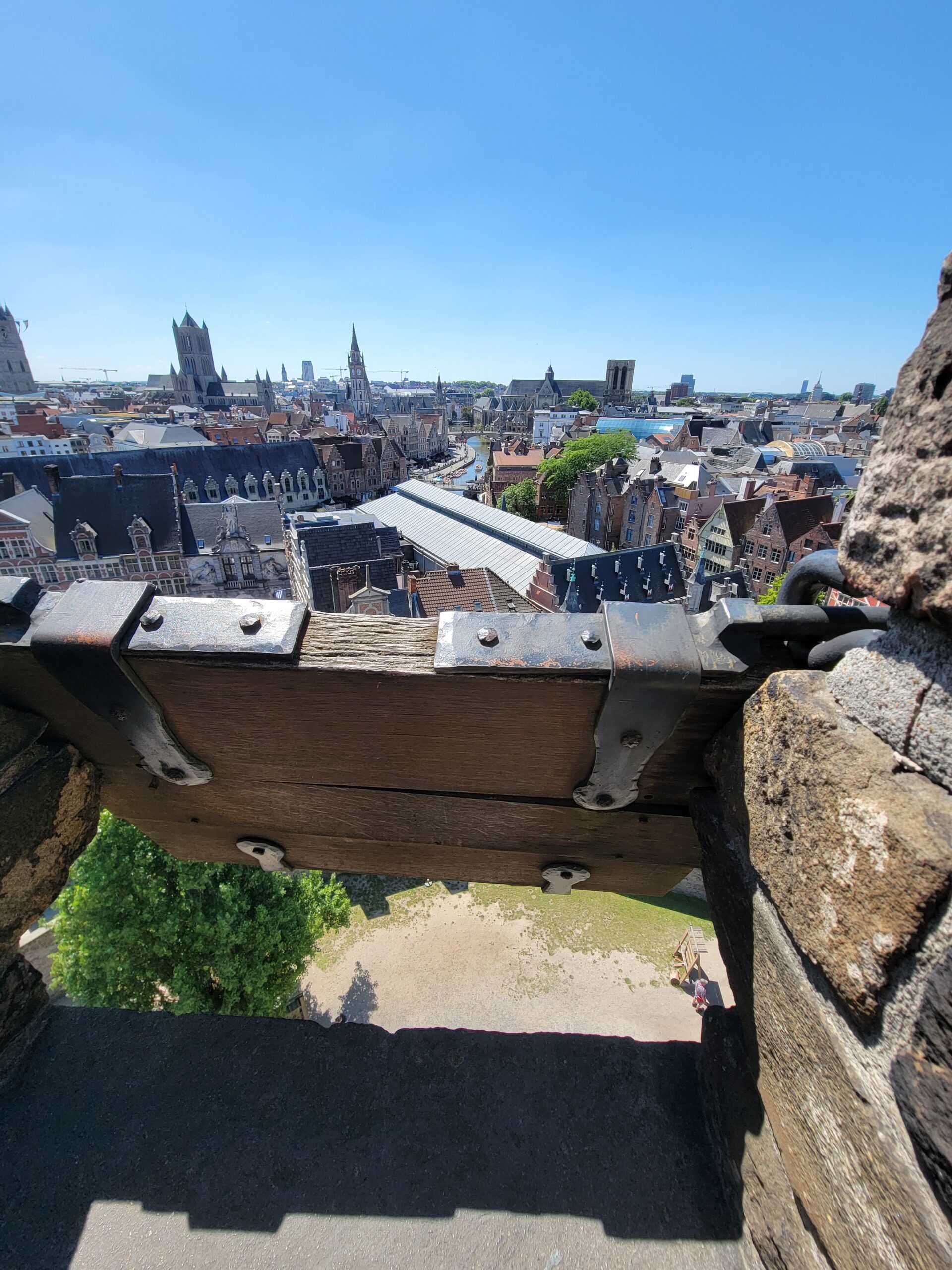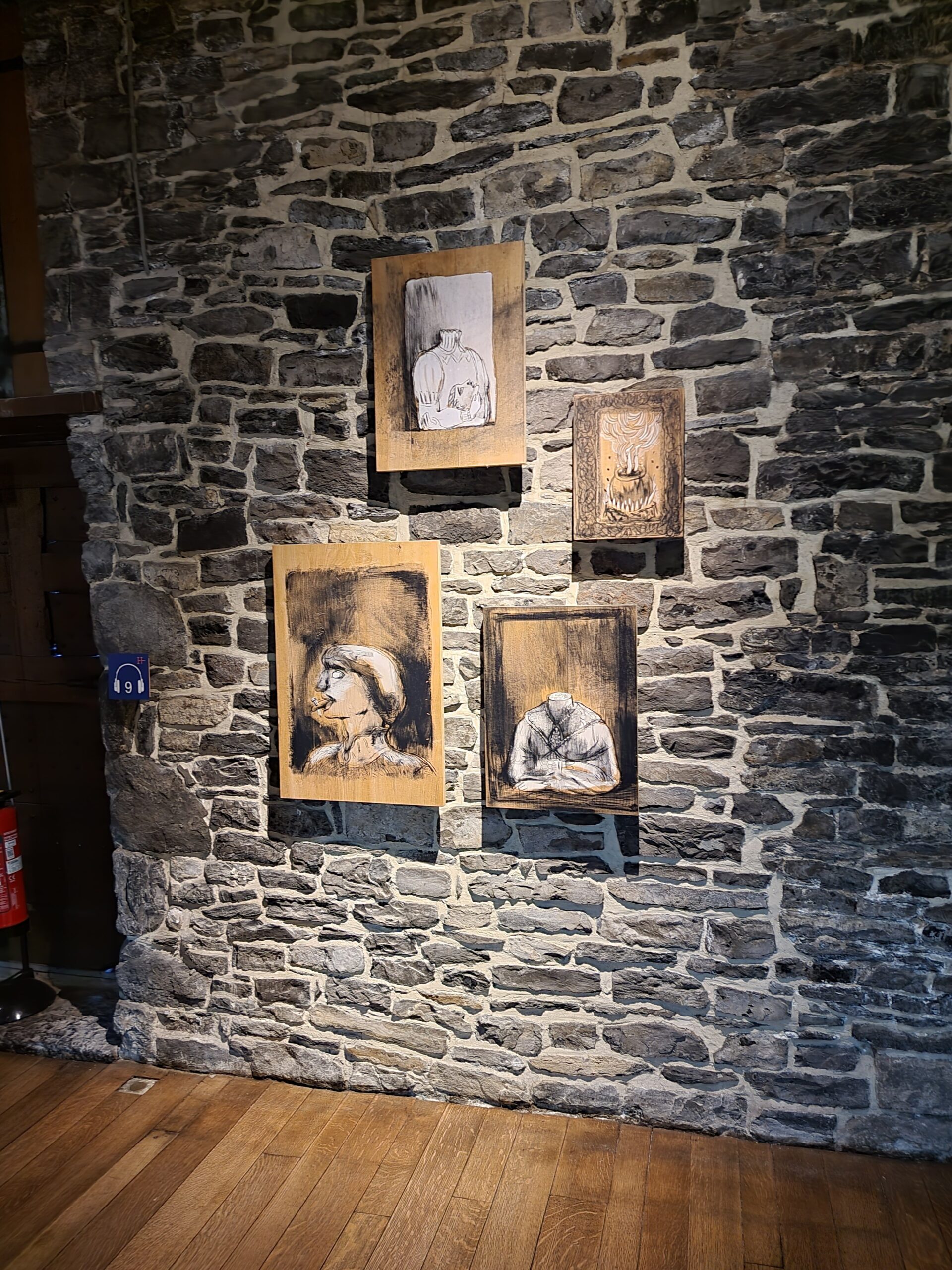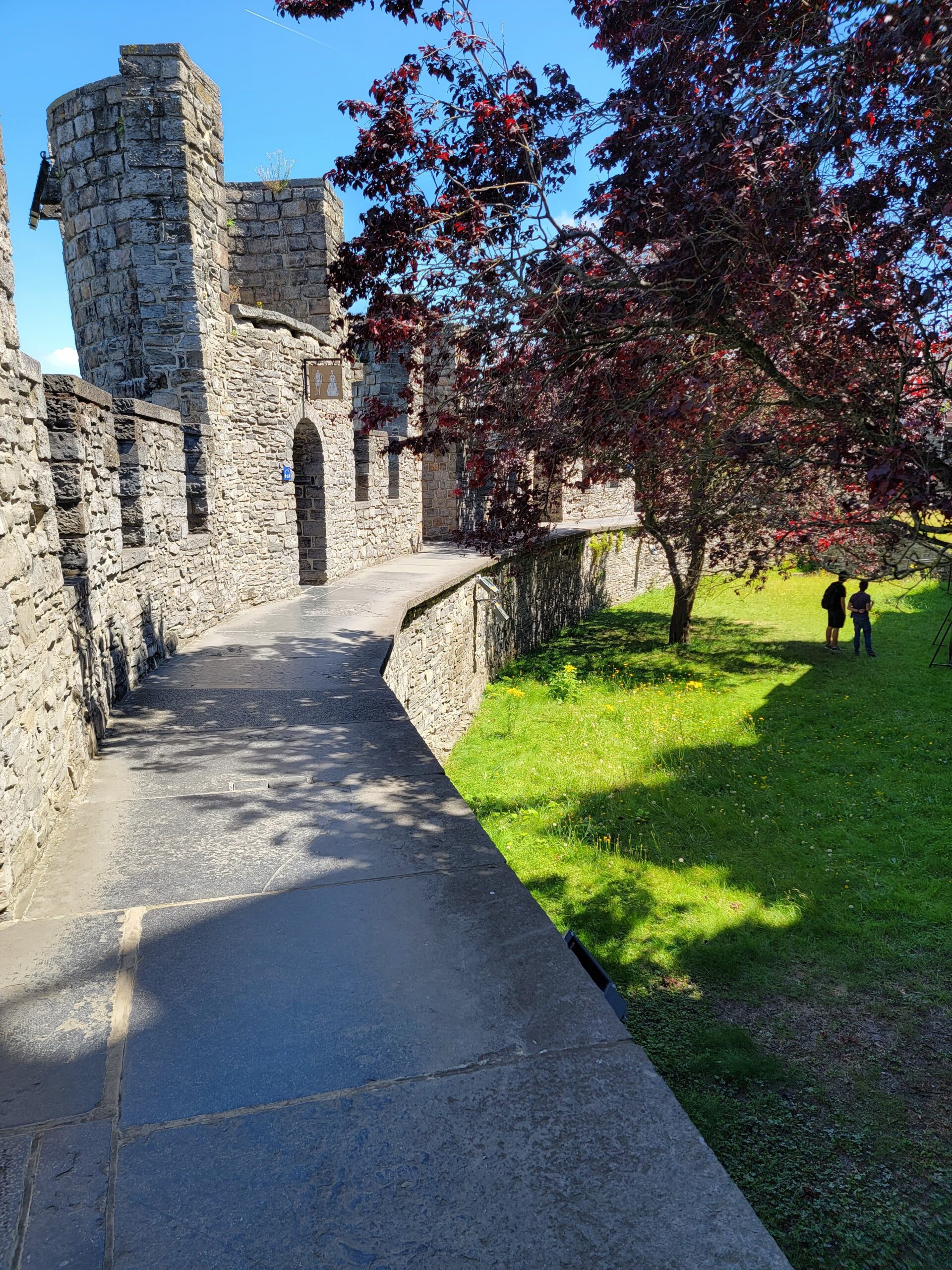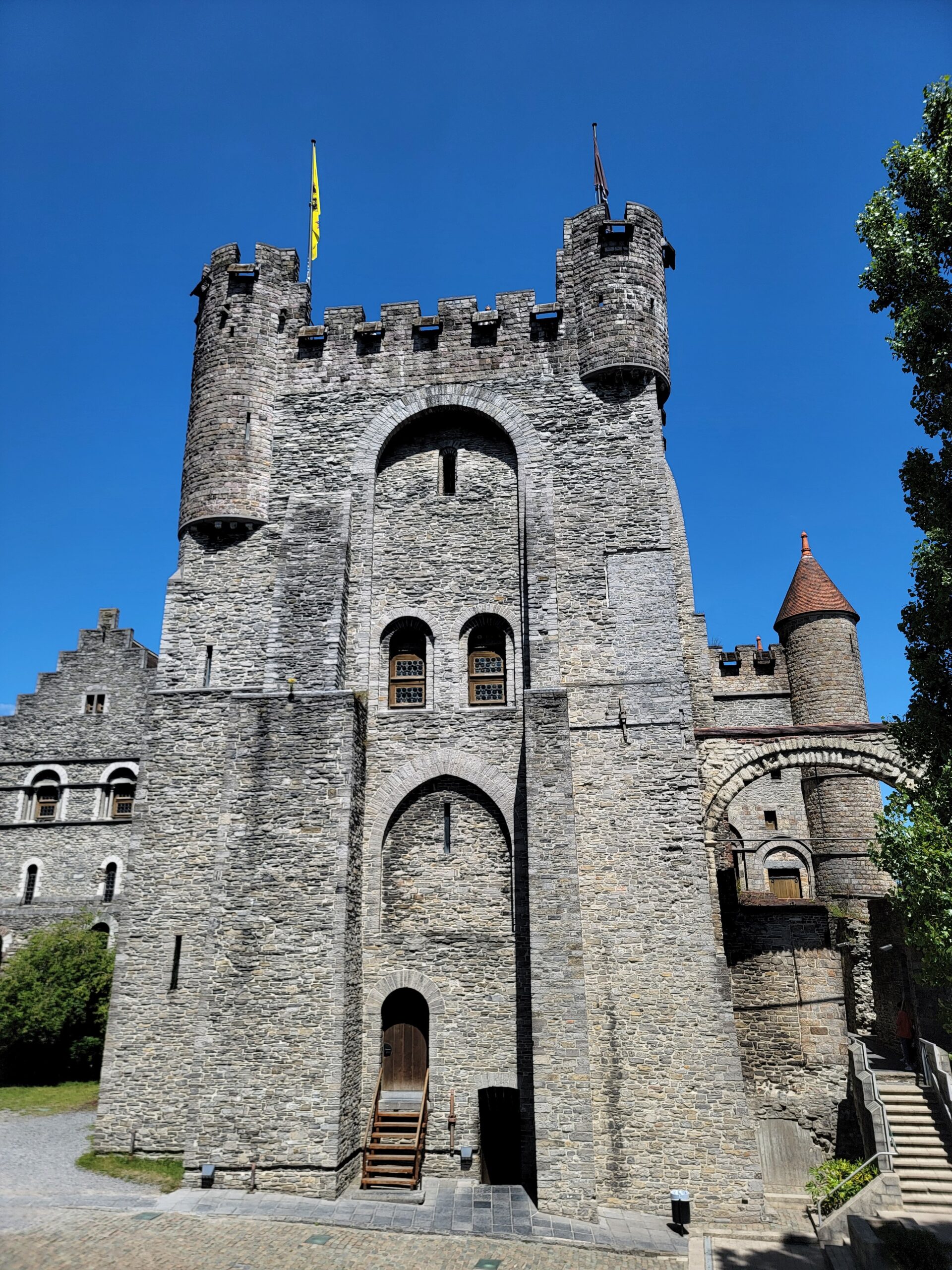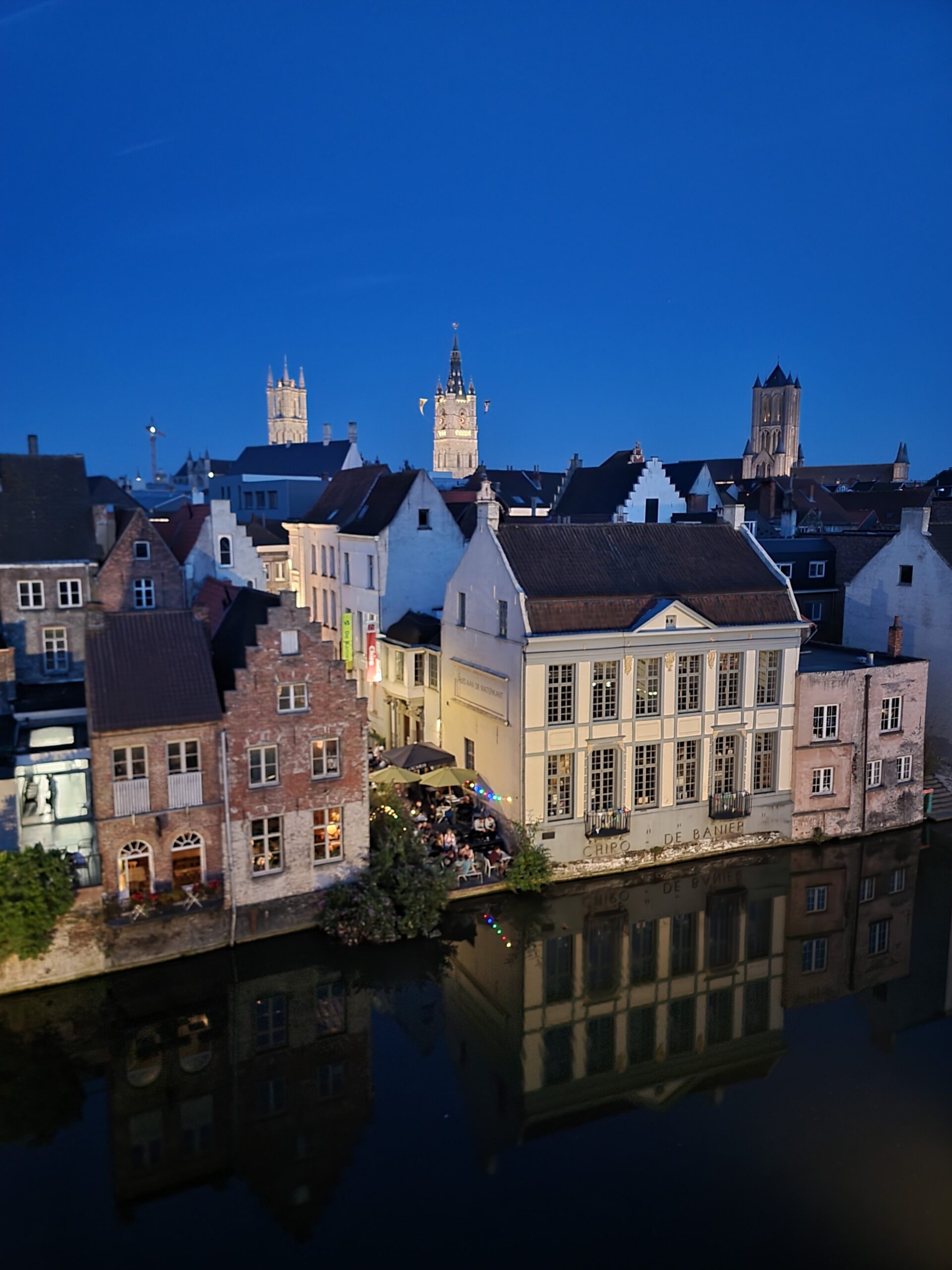We took a train from Ghent to Ypres for a half day tour of WWI sites in what is known as the Ypres Salient, aka Flanders Fields. The trains here are so fast and timely that a day trip is super easy to manage. I really wish the US had a train system like Europe does.
Ypres held a strategic position during WWI as it stood in the path of the Germans planned sweep of Belgium and France from the north. Germany’s invasion of Belgium brought the British Empire into the war, so there were soldiers from Britain, Ireland, Scotland, Canada, Australia, New Zealand, India, etc. participating in these WWI battles.
The German army surrounded Ypres on three sides, which is the definition of the term “salient”. The bulge of the Ypres Salient is shown below. This was the focus of our tour.
There were a total of 5 battles of Ypres, spanning 29 December 1914 to August 1918. This was primarily trench warfare, along with extensive shelling and mining.
We had an excellent guide, Genevra, from “Flanders Battlefield Tours”. Gen has seemingly committed every brain cell to memorizing details about the WWI battles in the area….literally a walking encyclopedia.
Our first stop was Essex Farm Cemetery, so named as that was the family that owned the farm along the front line.
This bunker built into the hillside was a field hospital to treat the wounded coming off the front lines.
This spot is famous as it was where Canadian surgeon Lt. John McCrae worked, in this small 8′ by 8′ bunker.
John McCrae is famous for writing the poem “In Flanders Fields”.
In Flanders Fields, the poppies blow
Between the crosses, row on row,
That mark our place; and in the sky
The larks, still bravely singing, fly
Scarce heard amid the guns below.
We are the dead, short days ago
We lived, felt dawn, saw sunset glow,
Loved and were loved, and now we lie
In Flanders fields.
Take up our quarrel with the foe:
To you from failing hands we throw
The torch; be yours to hold it high.
If ye break faith with us who die
We shall not sleep, though poppies grow
In Flanders fields.
There is a memorial site for John McCrae next to the field station, which has a plaque with a copy of his writing. McCrae wrote the poem on May 3, 1915, the day after he presided over the burial of his friend Lt. Alexis Helmer. Wild poppies were known to grow everywhere in the cemetery. Legend has it he crumpled the poem up and threw it on the ground, only to have a passing soldier pick it up and save it.
The below headstone was for a 15 year old soldier, who died a week before his 16th birthday.
There are a lot of headstones for unidentified soldiers.
The entirety of Essex Farm Cemetery.
We then visited the main German Military Cemetery in Langemark. There are 44,000 Germans buried here. It’s unusual as there are no individual graves. Multiple soldiers were buried together under flat headstones.
This cemetery is the final resting place of 3000 students who quit college to join the war effort. Most of them died in battle due to a lack of training and experience. This is the why it’s also known as the Studentenfriedhof (Student’s Cemetery). Hitler was so impressed by the dedication of these former students that he visited the exact site below in 1940, and used it as propaganda for the current students in Germany.
This is a gate exiting the cemetery.
Hitler exiting the same gate.
We then visited a Canadian monument known as The Brooding Soldier.
The Germans used chlorine gas for the first time on April 22, 1915, killing both French and Canadian soldiers, bringing in the era of chemical weaponry. The below plaque is on the Canadian monument.
Chlorine gas basically liquifies your mucus membranes, causing you to drown in your own bodily fluids. Really nasty stuff. Hence the brooding Canadian.
We then visited the largest Commonwealth cemetery in Flanders Fields, Tyne Cot Cemetery. There are 12,000 soldiers buried here.
The walls that surround the cemetery list the names of another 35,000 soldiers from the UK that were never found and presumed dead.
On our way to our last stop our guide slammed on the brakes when she saw this intact shell in the field on the side of the road. The farmers dig these up on a regular basis and just stick them upright in the field until the local bomb technicians can get there. It would have made for a nice souvenir but I’d have a hard time getting it through security. Plus we like to pack light!
Our last stop was Hill 62 Sanctuary Wood museum.
Hill 62 is so named as it is literally 62 meters above sea level. All of the hills in this area have names based on their height as the high ground was of utmost importance in WWI. The Sanctuary Wood name was given in October 1914, when the trees would provide cover for troops. There are a lot of WWI artifacts in the museum itself, but the real prize here are the preserved trenches.
They trenches are quite extensive and even include an underground tunnel that ran at least 150 feet.
They weren’t quite as deep as I would have expected from watching war movies. I presume a lot of ducking went on!
The little town of Ypres is quite beautiful today, as it has been fully restored. The Germans never reached Ypres, but they shelled it repeatedly. This is what it looked like after the war ended. So basically Detroit!
We had dinner in Ypres so we could catch the Last Post ceremony at Menin Gate. The Last Post takes place at 8:00 PM every day, rain or shine, Wuhan Flu or Monkeypox, and is well worth checking out.
This tradition dates back to November 11, 1929, Nancy Pelosi’s 40th birthday as a matter of fact, and the only time it hasn’t been conducted was during WWII, when Ypres was occupied by German forces. If you expand the photo you will be able to see various parts of the gate that have been patched up with different colors. These represent damage that happened during WWII.
The ceiling of the Menin Gate.
The walls of the memorial bear the names of 54,389 officers and soldiers who fell in the Ypres Salient before August 16th, 1917, and who have no known grave.
This is on both sides of the gate.
During the ceremony they have people bring out wreaths. I presume these are relatives of somebody lost in the war.
The Last Post. Sorry for the vertical video….I hate it when that happens! It’s a big file, so it may take a little bit to load, but it’s worth it.
On the way back to the train station we saw this Lego version of the Menin Gate. Very cool!
Up next, Brussels, Belgium, considered the Capital of Europe!

